Why is Singapore’s school system so successful, and is it a model for the West?
Honorary Professor, The University of Queensland

Disclosure statement
David Hogan received funding from the National Institute of Education in Singapore to conduct the research on which this article draws .
University of Queensland provides funding as a member of The Conversation AU.
View all partners
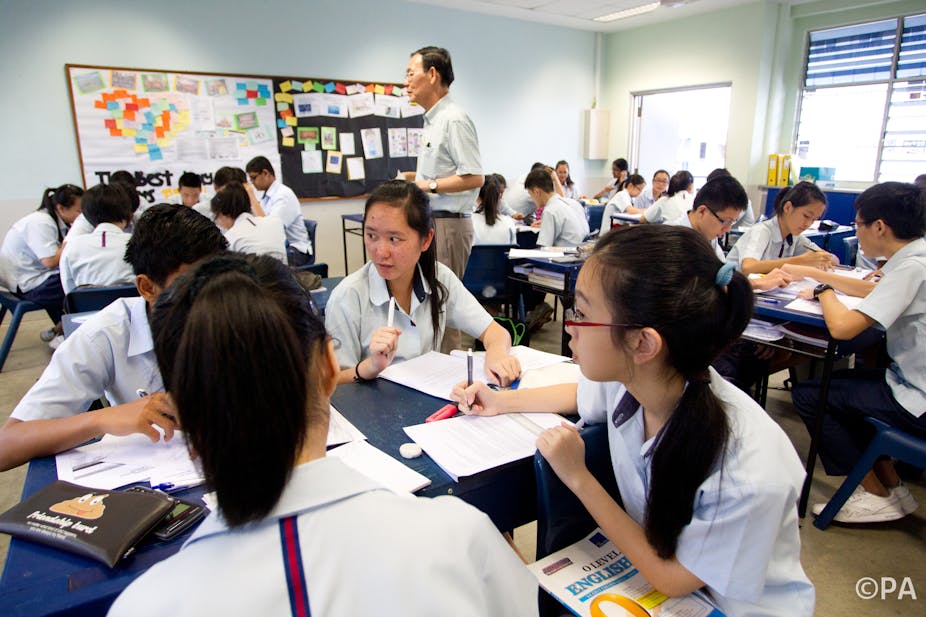
For more than a decade, Singapore, along with South Korea, Taiwan, Japan, Shanghai, Hong Kong and Finland, has been at or near the top of international leagues tables that measure children’s ability in reading, maths and science. This has led to a considerable sense of achievement in Finland and East Asia and endless hand-wringing and head-scratching in the West.
What then do Singaporean teachers do in classrooms that is so special, bearing in mind that there are substantial differences in classroom practices between – as well as within – the top-performing countries? What are the particular strengths of Singapore’s instructional regime that helps it perform so well? What are its limits and constraints?
Is it the right model for countries seeking to prepare students properly for the complex demands of 21st century knowledge economies and institutional environments more generally? Is Singapore’s teaching system transferable to other countries? Or is its success so dependent on very specific institutional and cultural factors unique to Singapore that it is folly to imagine that it might be reproduced elsewhere?
Singapore’s instructional regime
In general, classroom instruction in Singapore is highly-scripted and uniform across all levels and subjects. Teaching is coherent, fit-for-purpose and pragmatic, drawing on a range of pedagogical traditions, both Eastern and Western.
As such, teaching in Singapore primarily focuses on coverage of the curriculum, the transmission of factual and procedural knowledge, and preparing students for end-of-semester and national high stakes examinations.
And because they do, teachers rely heavily on textbooks, worksheets, worked examples and lots of drill and practice. They also strongly emphasise mastery of specific procedures and the ability to represent problems clearly, especially in mathematics. Classroom talk is teacher-dominated and generally avoids extended discussion.
Intriguingly, Singaporean teachers only make limited use of “high leverage” or unusually effective teaching practices that contemporary educational research (at least in the West) regards as critical to the development of conceptual understanding and “learning how to learn”.
For example, teachers only make limited use of checking a student’s prior knowledge or communicating learning goals and achievement standards. In addition, while teachers monitor student learning and provide feedback and learning support to students, they largely do so in ways that focus on whether or not students know the right answer, rather than on their level of understanding.
So Singapore’s teaching regime is one primarily focused on the transmission of conventional curriculum knowledge and examination performance. And clearly it is highly-effective, helping to generate outstanding results in international assessments Trends in International Mathematics and Science Study (TIMSS) and the OECD’s Programme for International Student Assessment (PISA) .
The logic of teaching in Singapore
Singapore’s education system is the product of a distinctive, even unique, set of historical, institutional and cultural influences. These factors go a long way to help explain why the educational system is especially effective in the current assessment environment, but it also limits how transferable it is to other countries.
Over time, Singapore has developed a powerful set of institutional arrangements that shape its instructional regime. Singapore has developed an education system which is centralised (despite significant decentralisation of authority in recent years), integrated, coherent and well-funded. It is also relatively flexible and expert-led.
In addition, Singapore’s institutional arrangements is characterised by a prescribed national curriculum. National high stakes examinations at the end of primary and secondary schooling stream students according to their exam performance and, crucially, prompt teachers to emphasise coverage of the curriculum and teaching to the test. The alignment of curriculum, assessment and instruction is exceptionally strong.
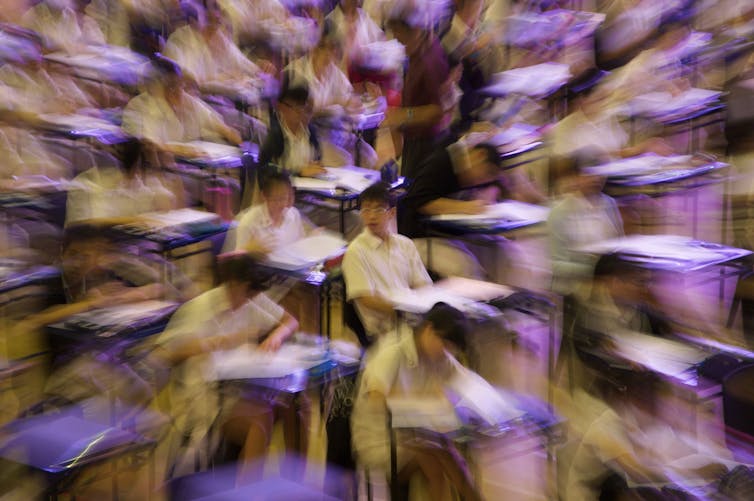
Beyond this, the institutional environment incorporates top-down forms of teacher accountability based on student performance (although this is changing), that reinforces curriculum coverage and teaching to the test. Major government commitments to educational research (£109m between 2003-2017) and knowledge management are designed to support evidence-based policy making. Finally, Singapore is strongly committed to capacity building at all levels of the system, especially the selection, training and professional development of principals and teachers.
Singapore’s instructional regime and institutional arrangements are also supported by a range of cultural orientations that underwrites, sanctions and reproduces the instructional regime. At the most general level, these include a broad commitment to a nation-building narrative of meritocratic achievement and social stratification, ethnic pluralism, collective values and social cohesion, a strong, activist state and economic growth.
In addition, parents, students, teachers and policy makers share a highly positive but rigorously instrumentalist view of the value of education at the individual level. Students are generally compliant and classrooms orderly.
Importantly, teachers also broadly share an authoritative vernacular or “folk pedagogy” that shapes understandings across the system regarding the nature of teaching and learning. These include that “teaching is talking and learning is listening”, authority is “hierarchical and bureaucratic”, assessment is “summative”, knowledge is “factual and procedural,” and classroom talk is teacher-dominated and “performative”.
Clearly, Singapore’s unique configuration of historical experience, instruction, institutional arrangements and cultural beliefs has produced an exceptionally effective and successful system. But its uniqueness also renders its portability limited. But there is much that other jurisdictions can learn about the limits and possibilities of their own systems from an extended interrogation of the Singapore model.
At the same time it is also important to recognise that the Singapore model is not without its limits. It generates a range of substantial opportunity costs, and it constrains (without preventing) the capacity of the system for substantial and sustainable reform. Other systems, contemplating borrowing from Singapore, would do well to keep these in mind.
Reforming the Singapore model
The Asian financial crisis of the late 1990s challenged policy makers to take a long hard look at the educational system that they developed, and ever since they have been acutely aware that the pedagogical model that had propelled Singapore to the top of international leagues table is not appropriately designed to prepare young people for the complex demands of globalisation and 21st knowledge economies.
By 2004-5, Singapore’s government had more or less identified the kind of pedagogical framework it wanted to work towards, and called it Teach Less, Learn More . This framework urged teachers to focus on the “quality” of learning and the incorporation of technology into classrooms and not just the “quantity” of learning and exam preparation.
While substantial progress has been made, the government has found rolling-out and implementing these reforms something of a challenge. In particular, instructional practices proved well entrenched and difficult to change in a substantial and sustainable way.
This was in part because the institutional rules that govern classroom pedagogy were not altered in ways that would support the proposed changes to classroom teaching. As a consequence, well-established institutional rules have continued to drive teachers to teach in ways that prioritise coverage of the curriculum, knowledge transmission and teaching to the test over “the quality” of learning, or to adopt high-leverage instructional practices.
Indeed, teachers do so for good reason, since statistical modelling of the relationship between instructional practices and student learning indicates that traditional and direct instructional techniques are much better at predicting student achievement than high leverage instructional practices, given the nature of the tasks students are assessed on.
Not the least of the lessons of these findings is that teachers in Singapore are unlikely to cease teaching to the test until and unless a range of conditions are met. These include that the nature of the assessment tasks will need to change in ways that encourages teachers to teacher differently. Above all, new kinds of assessment tasks that focus on the quality of student understanding are likely to encourage teachers to design instructional tasks. These can provide rich opportunities to learn and encourage high-quality knowledge work.
The national high stakes assessment system should also incorporate a moderated, school-based component that allows teachers to design tasks that encourage deeper learning rather than just “exam learning”.
The national curriculum should allow substantial levels of teacher mediation at the school and classroom level. This needs to have clearly specified priorities and principles, backed up by substantial commitments to authentic, in-situ, forms of professional development that provide rich opportunities for modelling, mentoring and coaching.
Finally, the teacher evaluation system needs to rely far more substantially on accountability systems that acknowledge the importance of peer judgement, and a broader range of teacher capacities and valuable student outcomes than the current assessment regime currently does.
Meanwhile, teachers will continue to bear the existential burden of managing an ongoing tension between what, professionally speaking, many of them consider good teaching, and what, institutionally speaking, they recognise is responsible teaching.
One of the central challenges confronting the Ministry of Education in Singapore is to reconcile good and responsible teaching. But the ministry is clearly determined to bed-down a pedagogy capable of meeting the demands of 21st century institutional environments, particularly developing student capacity to engage in complex knowledge work within and across subject domains.
The technical, cultural, institutional and political challenges of doing so are daunting. However, given the quality of leadership across all levels of the system, and Singapore’s willingess to grant considerable pedagogical authority to teachers while providing clear guidance as to priorities, I have no doubt it will succeed. But it will do so on its own terms and in ways that achieve a sustainable balance of knowledge transmission and knowledge-building pedagogies that doesn’t seriously compromise the overall performativity of the system.
It is already clear that the government is willing to tweak once sacred cows, including the national high stakes exams and streaming systems. However, it has yet to tackle the perverse effects of streaming on classroom composition and student achievement that continues to overwhelm instructional effects in statistical modelling of student achievement.
Towards a knowledge building pedagogy
Singapore’s experience and its current efforts to improve the quality of teaching and learning do have important, if ironic, implications for systems that hope to emulate its success.
This is especially true of those jurisdictions – I have in mind England and Australia especially – where conservative governments have embarked on ideologically driven crusades to demand more direct instruction of (Western) canonical knowledge, demanding more testing and high stakes assessments of students, and imposing more intensive top-down performance regimes on teachers.
In my view, this is profoundly and deeply mistaken. It is also more than a little ironic given the reform direction Singapore has mapped out for itself over the past decade. The essential challenge facing Western jurisdictions is not so much to mimic East Asian instructional regimes, but to develop a more balanced pedagogy that focuses not just on knowledge transmission and exam performance, but on teaching that requires students to engage in subject-specific knowledge building.
Knowledge building pedagogies recognise the value of established knowledge, but also insist that students need to be able to do knowledge work as well as learning about established knowledge. Above all, this means students should acquire the ability to recognise, generate, represent, communicate, deliberate, interrogate, validate and apply knowledge claims in light of established norms in key subject domains.
In the long run, this will do far more for individual and national well-being, including supporting development of a vibrant and successful knowledge economy, than a regressive quest for top billing in international assessments or indulging in witless “culture wars” against modernity and emergent, not to mention long-established, liberal democratic values.
- Education policy
- school curriculum
- Teacher training

Senior Research Development Coordinator

Audience Development Coordinator (fixed-term maternity cover)

Lecturer (Hindi-Urdu)

Director, Defence and Security

Opportunities with the new CIEHF
- Society ›
- Education & Science
Education in Singapore - statistics & facts
The singapore education system, the pressures of achieving academic excellence, key insights.
Detailed statistics
Mean PISA score of students in Singapore 2009-2018, by subject
Government recurrent expenditure on education Singapore 2013-2022
Mean years of schooling Singapore 2013-2022
Editor’s Picks Current statistics on this topic
Current statistics on this topic.
Educational Institutions & Market
Government total expenditure on education in Singapore FY 2012-2022
Education Level & Skills
Highest education qualification attained by adult residents Singapore 2022
Literacy rate Singaporeans 15 years and older 2012-2021
Related topics
Recommended.
- Education in Indonesia
- Education in Vietnam
- Education in Thailand
- Education in Japan
- Education in China
Recommended statistics
- Premium Statistic Estimated share of government spending in Singapore FY 2022, by ministries
- Premium Statistic Mean PISA score of students in Singapore 2009-2018, by subject
- Premium Statistic Mean years of schooling Singapore 2013-2022
- Premium Statistic Highest education qualification attained by adult residents Singapore 2022
- Basic Statistic Literacy rate Singaporeans 15 years and older 2012-2021
Estimated share of government spending in Singapore FY 2022, by ministries
Estimated share of government spending in Singapore in financial year 2022, by ministries
Mean Programme for International Student Assessment (PISA) score of students in Singapore from 2009 to 2018, by subject
Mean years of schooling for adults aged 25 years and above in Singapore from 2013 to 2022
Breakdown of residents aged 25 years and older in Singapore in 2022, by highest education qualification attained (in 1,000s)
Literacy rate for people 15 years and older in Singapore from 2012 to 2021
Government spending
- Premium Statistic Government total expenditure on education in Singapore FY 2012-2022
- Premium Statistic Government recurrent expenditure on education Singapore FY 2021, by education level
- Premium Statistic Government expenditure on education per student Singapore FY 2022, by education level
Government total expenditure on education in Singapore from financial years 2012 to 2022 (in billion Singapore dollars)
Government recurrent expenditure on education Singapore FY 2021, by education level
Government recurrent expenditure on education in Singapore in the financial year 2021, by education level (in billion Singapore dollars)
Government expenditure on education per student Singapore FY 2022, by education level
Government recurrent expenditure on education per student in Singapore in the financial year 2022, by education level (in 1,000 Singapore dollars)
- Premium Statistic Enrollment in educational institutions in Singapore 2021, by type
- Premium Statistic Enrollment in primary schools in Singapore 2013-2022
- Premium Statistic Enrollment in secondary schools in Singapore 2013-2022
- Premium Statistic Enrollment in polytechnic institutions in Singapore 2013-2022
- Premium Statistic Full-time enrollment in universities in Singapore 2013-2022
Enrollment in educational institutions in Singapore 2021, by type
Enrollment in educational institutions in Singapore in 2021, by type (in 1,000s)
Enrollment in primary schools in Singapore 2013-2022
Enrollment in primary schools in Singapore from 2013 to 2022 (in 1,000s)
Enrollment in secondary schools in Singapore 2013-2022
Enrollment in secondary schools in Singapore from 2013 to 2022 (in 1,000s)
Enrollment in polytechnic institutions in Singapore 2013-2022
Polytechnic enrollment in Singapore from 2013 to 2022 (in 1,000s)
Full-time enrollment in universities in Singapore 2013-2022
Full-time university enrollment in Singapore from 2013 to 2022 (in 1,000s)
Educational institutions
- Premium Statistic Number of primary schools in Singapore 1960-2022
- Premium Statistic Number of secondary schools in Singapore 1960-2022
- Premium Statistic Number of mixed level schools in Singapore 1960-2022
- Premium Statistic Number of pre-university schools in Singapore 1970-2022
Number of primary schools in Singapore 1960-2022
Number of primary schools in Singapore from 1960 to 2022
Number of secondary schools in Singapore 1960-2022
Number of secondary schools in Singapore from 1960 to 2022
Number of mixed level schools in Singapore 1960-2022
Number of mixed level schools in Singapore from 1960 to 2022
Number of pre-university schools in Singapore 1970-2022
Number of junior colleges and centralized institutes in Singapore from 1970 to 2022
Teaching staff
- Premium Statistic Number of teachers by educational institution in Singapore 2021
- Premium Statistic Student-teacher ratio in primary schools Singapore 2013-2022
- Premium Statistic Average primary school class size Singapore 2013-2022
- Premium Statistic Length of service of primary school teachers in Singapore 2022
- Premium Statistic Student-teacher ratio in secondary schools Singapore 2013-2022
- Premium Statistic Average secondary school class size Singapore 2013-2022
- Premium Statistic Length of service of secondary school teachers in Singapore 2022
Number of teachers by educational institution in Singapore 2021
Number of teachers in Singapore in 2021, by educational institution
Student-teacher ratio in primary schools Singapore 2013-2022
Ratio of students to teaching staff in primary schools in Singapore from 2013 to 2022
Average primary school class size Singapore 2013-2022
Average class size in primary schools in Singapore from 2013 to 2022
Length of service of primary school teachers in Singapore 2022
Length of service of primary school teachers in Singapore in 2022
Student-teacher ratio in secondary schools Singapore 2013-2022
Ratio of students to teaching staff in secondary schools in Singapore from 2013 to 2022
Average secondary school class size Singapore 2013-2022
Average class size in secondary schools in Singapore from 2013 to 2022
Length of service of secondary school teachers in Singapore 2022
Length of service of secondary school teachers in Singapore in 2022
Further reports Get the best reports to understand your industry
Get the best reports to understand your industry.
- Education sector in the Gulf Cooperation Council
- Education in Myanmar
- Education in India
- Education in Australia
Mon - Fri, 9am - 6pm (EST)
Mon - Fri, 9am - 5pm (SGT)
Mon - Fri, 10:00am - 6:00pm (JST)
Mon - Fri, 9:30am - 5pm (GMT)
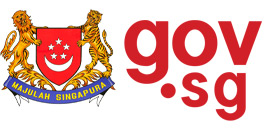
You might be interested in...

Preparing our children for the future
In this feature.
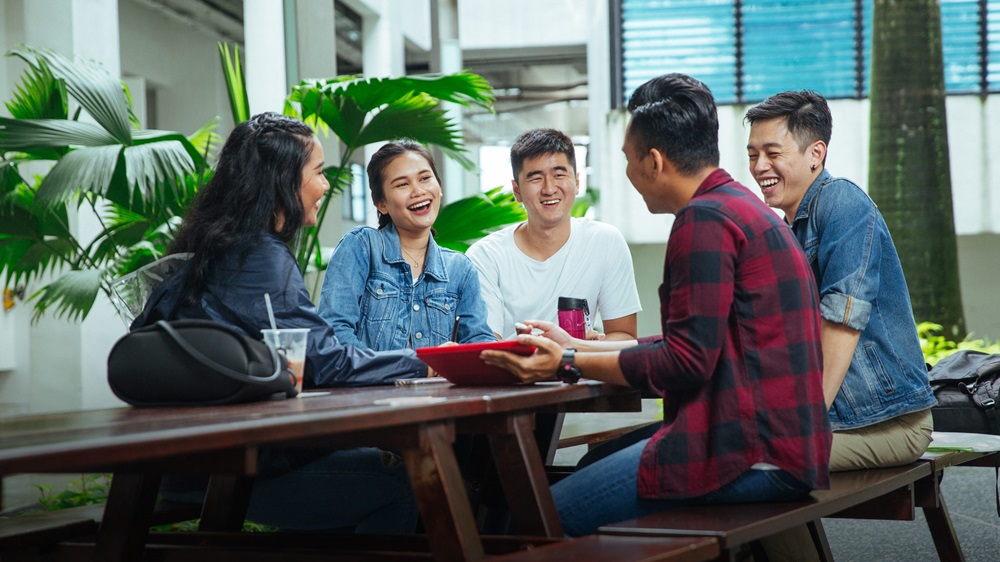
What are the new pathways available in Singapore’s education system?
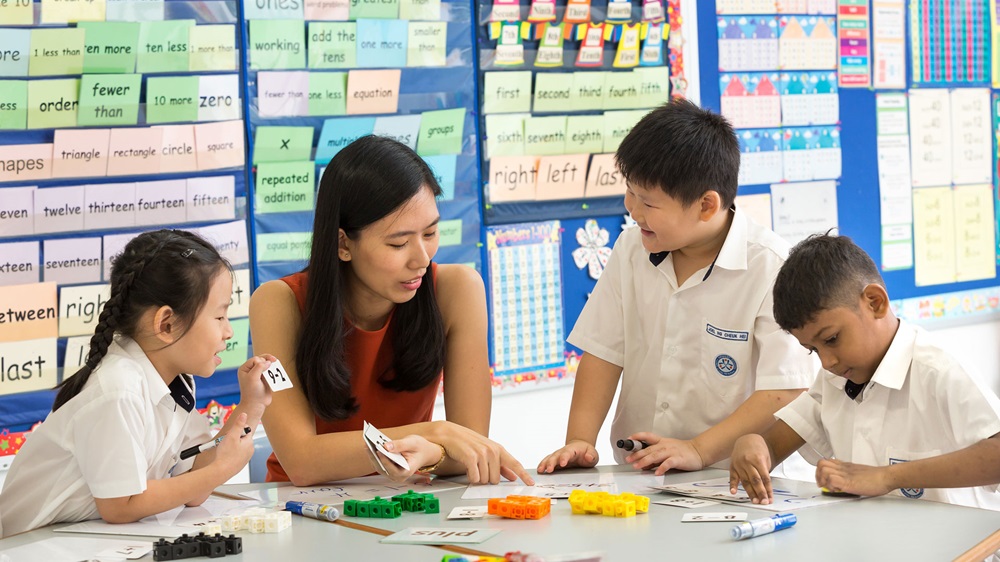
Financial support for Singaporean students at every stage of education

The 2 ways Singapore is making learning enjoyable for students
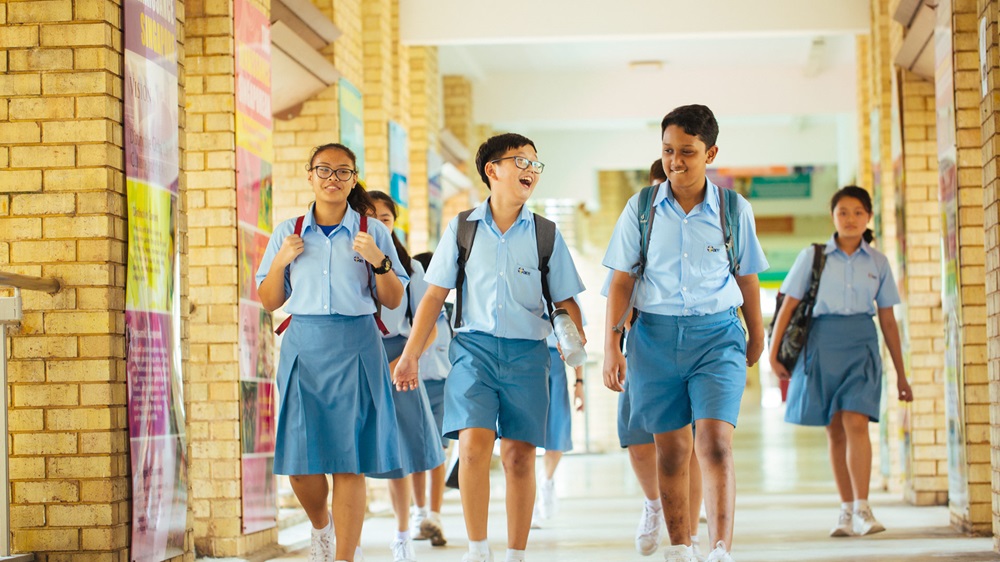
How is our education system preparing our young for the future?

We use cookies to tailor your browsing experience. By continuing to use Gov.sg, you accept our use of cookies. To decline cookies at any time, you may adjust your browser settings. Find out more about your cookie preferences here .
- Privacy Statement
- Terms of Use
- Rate This Website
- Report Vulnerability

Education in Singapore
People-Making and Nation-Building
- © 2022
- Yew-Jin Lee 0
National Institute of Education, Nanyang Technological University, Singapore, Singapore
You can also search for this editor in PubMed Google Scholar
- Provides wide spectrum of up-to-date information about educational sectors, policies, and school subjects in Singapore
- Contains many scholarly introductions to education in Singapore
- Presents a comprehensive and valuable resource written by select team of local and international experts
Part of the book series: Education in the Asia-Pacific Region: Issues, Concerns and Prospects (EDAP, volume 66)
55k Accesses
10 Citations
1 Altmetric
This is a preview of subscription content, log in via an institution to check access.
Access this book
- Available as EPUB and PDF
- Read on any device
- Instant download
- Own it forever
- Compact, lightweight edition
- Dispatched in 3 to 5 business days
- Free shipping worldwide - see info
- Durable hardcover edition
Tax calculation will be finalised at checkout
Other ways to access
Licence this eBook for your library
Institutional subscriptions
Table of contents (23 chapters)
Front matter, introduction.
Yew-Jin Lee
The Next Phase of Developments in Singapore’s ECCE: Quality in the Best Interest of All Children?
- Sirene May-Yin Lim, Chee Wah Sum
Inclusive Education for Children with Special Educational Needs in Singapore Schools
- Kenneth K. Poon
Primary and Secondary Education in Singapore: Bringing Out the Best in Every Learner
- Jeanne Ho, Yew-Jin Lee
Post-secondary Education in Singapore
- Trivina Kang
Higher Education in Singapore: Perspectives and Future Orientation
- Horn Mun Cheah, Laura Lyn Lee
Post-secondary Education Institutions Internships—The Singapore Experience
- Shien Chue, Ethan Pang, Priscilla Pang, Yew-Jin Lee
The Dynamic Landscape of Adult Education in Singapore
- Helen Bound, Zan Chen
The Texture and History of Singapore’s Education Meritocracy
- Charleen Chiong
From Meritocracy to Parentocracy, and Back
- Vincent Chua, Kelvin K. C. Seah
Education for the Minority Malay Community in Singapore: A Sociological Perspective
- Mohamad Shamsuri Juhari
The Dynamic Interplay Between Curriculum and Context: Revisions in Response to National, Societal, and Contextual Needs
- Christina Ratnam-Lim Tong Li, Lucy Oliver Fernandez
School Leadership in Decentralized Centralism of Singapore Education
- Salleh Hairon, Soon How Loh
Assessment Reforms in Singapore
- Kelvin Heng Kiat Tan
Chinese Language Education and Assessment Policy in Singapore (1965–2021)
- Yun-Yee Cheong
Key Developments in English Education in Singapore from the Post-independence Period to the Present
- Suzanne S. Choo, Alexius Chia, Caroline Chan
Innovating Towards Reading Excellence in the Singapore English Language Curriculum
- Chin Ee Loh, Elizabeth Pang
Paths to a Whole: Placing Music Education in Singapore
- E. I. Dairianathan
The Coherence Between Policy Initiatives and Physical Education Developments in Nation-Building
- Steven Kwang San Tan, Shern Meng Tan, Connie Huat Neo Yeo, Liang Han Wong
- Singapore Education
- Meritocracy in Singapore
- Bilingualism in Singapore
- Nation-Building
- People-Making
- Physical Education
- Geography Education
- Art Education
About this book
Editors and affiliations, about the editor, bibliographic information.
Book Title : Education in Singapore
Book Subtitle : People-Making and Nation-Building
Editors : Yew-Jin Lee
Series Title : Education in the Asia-Pacific Region: Issues, Concerns and Prospects
DOI : https://doi.org/10.1007/978-981-16-9982-5
Publisher : Springer Singapore
eBook Packages : Education , Education (R0)
Copyright Information : The Editor(s) (if applicable) and The Author(s), under exclusive license to Springer Nature Singapore Pte Ltd. 2022
Hardcover ISBN : 978-981-16-9981-8 Published: 07 April 2022
Softcover ISBN : 978-981-16-9984-9 Published: 08 April 2023
eBook ISBN : 978-981-16-9982-5 Published: 06 April 2022
Series ISSN : 1573-5397
Series E-ISSN : 2214-9791
Edition Number : 1
Number of Pages : X, 437
Number of Illustrations : 6 b/w illustrations, 10 illustrations in colour
Topics : Educational Policy and Politics , International and Comparative Education , History of Education
- Publish with us
Policies and ethics
- Find a journal
- Track your research

School Education System In Singapore

Overview of the Education System in Singapore
The education system in Singapore is governed by the Ministry of Education’s “Desired Outcomes of Education” at primary, secondary and post-secondary levels. Generally, Singapore’s education system aims to create students with a good sense of self-awareness, sound moral compass and the necessary skills and knowledge to face obstacles in the future. After graduating from the system, students in Singapore should be confident critical thinkers, self-directed learners, active contributors to society and concerned citizens with a strong sense of civic consciousness.
Current Structure and Format
Education is compulsory for all Singaporean citizens and consists of six years of primary school, four years of secondary school, and one to three years of post-secondary school. On the other hand, kindergarten is optional — preschool education is offered by the Ministry of Education as well as private providers. The curriculum’s structure and syllabus is well-developed and is assessed with an end-of-course exam. Students in the fourth year of primary school are subjected to school-based tests that determine what level (band) they will study for English, mathematics, mother tongue, and science in the next two years. At the end of primary school, students aged 12 years old are required to sit for the Primary School Leaving Examination (PSLE) in English, mathematics, mother tongue, and science. Students are admitted to one of four pathways in secondary school based on their PSLE results.
Singapore Education Facts
English is used as the language of instruction for most subjects. Students will also study their ‘mother tongue’ language from an early age. The Singapore primary school curriculum develops students’ proficiency in English, their mother tongue language (Chinese, Malay and Tamil speaking students) and mathematics.
In secondary school, the curriculum is standardised for students aged 12 to 16 even though they enter different bands. Students in the more difficult bands are expected to perform at a higher level and achieve better academic results. Core subjects at secondary school are English, mother tongue language, mathematics, science, literature, history, geography, arts, crafts and design; and technology and home economics. Secondary school students will sit for the GCE O and N Levels to determine which type of post-secondary education they will pursue. The GCE A levels determine a student’s path in higher education.
The academic year in the Singapore education system is made up of two semesters. The first semester typically runs from January through to May, followed by a school break. The second semester starts in July, which runs until a break in November and December. Students also enjoy a shorter break in the middle of each semester.
Private and Public Schools in Singapore
There are several types of schools in Singapore. Government schools offer high-quality education with affordable fees. Government-aided schools follow the national syllabus and are mostly funded by the government. Independent schools have more flexibility in determining its fees and curriculum. In addition, there are specialised independent schools that cater to students with skills in mathematics, science, arts and sports, among others. Lastly, there are specialised schools that offer an experiential and hands-on learning approach to learning.
Teachers in Singapore
There are now over 50,000 teachers in Singapore’s education system. Teachers are responsible for performing continuous assessments of their students at all levels of education. Singaporean teachers follow the Singapore Teaching Practice as a model of teaching and learning to deliver effective results to their students. The Ministry of Education provides ongoing training to teachers through the Singapore Instructional Mentoring Programme, Teacher Work Attachment Programme, and Outstanding Educator-in-Residence Programme. In addition, teachers also organise learning communities and conferences to share the latest developments in pedagogy, curriculum, and assessment.
Average Cost of Education in Singapore
The cost of education in Singapore varies depending on the type of institution and level of education. Here is a general overview of the average cost of education in Singapore.
- Early childhood education: The cost can range from around SGD 500 to SGD 2,500 per month for full-day childcare and preschool services.
- Primary and secondary education: Public schools are heavily subsidized by the government with tuition fees typically ranging from SGD 13 to SGD 90 per month.
- Pre-university education: Pre-university education in public schools is also heavily subsidised by the government with fees ranging from SGD 6 to SGD 33 per month.
- Tertiary education: The cost of tertiary education varies depending on the type of institution and the course of study.
However, parents are subjected to small ‘miscellaneous’ fees, which are determined by the Ministry of Education. These fees are in addition to costs for uniforms, transport and school materials.
International Schools in Singapore Fees
Each international school in Singapore has a unique fee structure. Parents can expect to pay anything from USD15,000 to USD30,000 annually for tuition fees. International school fee structures also include registration fees, deposits, technology and maintenance costs.
Government Bodies Involved in Education in Singapore
The Ministry of Education is heavily involved in the country’s curriculum implementation. However, the ministry has been more flexible in recent years — encouraging schools to use the curriculum as a framework and adapt it to fit their students’ needs the best. For example, secondary schools are encouraged to develop additional courses to set them apart from other schools. Therefore, students have more of a direction when it comes to academics by choosing a school that fits their passions and interests.
Education Levels
Children aged three may enter preschools in Singapore. Primary school begins at the age of seven until 12. After that, students transition to secondary school until the age of 17. Students have to complete two or three years of pre-university studies to qualify entrance to the university of their choice.
Singapore education problems
Singapore’s education is known to be one of the best, topping world rankings in standardised tests annually. However, this academic achievement comes at a price. Children as young as seven years old suffer from high stress levels as a result of the competitive pressure from schools, their parents and society as a whole. Many have pointed out that Singapore’s education system focuses too heavily on academics — creating rote learners out of students for the sake of attaining perfect test scores. There is a lack of emphasis on soft skills such as critical thinking and problem solving. This high stakes environment at such a young age may have negative effects on social skills, mental health and physical well-being.
Singapore country stats
Singapore, once a British colonial trading post, is now a wealthy country in Southeast Asia. Over 5.9 million residents live in Singapore. The country is known as a leading financial hub and for its thriving economy. It is renowned for its conservatism and strict local laws and the country prides itself on its stability and security. There are four major languages spoken in Singapore which are English, Mandarin, Malay and Tamil.
Expats living in Singapore information
Singapore is home to over 160,000 expatriates who work in the 7,000 multinational companies operating in the country. International schools in Singapore mainly cater to the children of expatriates who have relocated to the country. It may be difficult for expatriates to enrol their children into local schools as their children need to sit for the Admissions Exercise for International Students (AEIS). Upon passing the AEIS, expatriate children will only be able to enter the local school system if there is a spot available. Only five percent of the total student enrolment in national schools is made up of international students. Strict regulations have also been implemented by the Singaporean government on the enrolment of local students into international schools. Local students need to obtain special permission from the Ministry of Education to gain entr y into international schools.
Standard of living in Singapore
Singapore ranks highly in terms of economy, business climate, technology, and education. Residents of Singapore enjoy high-quality health care, education, personal safety, and housing standards. In addition, residents enjoy a safe and enriched high standard of living due to Singapore's economic status, cleanliness, and multicultural environment.
Public transportation in Singapore
The public transportation system in Singapore is efficient and well-planned. This includes the Mass Rapid Transit (MRT) which covers most of Singapore, the Light Rapid Transit and monorail systems. Other options include ferries, public buses, and taxis. Due to limited road space, driving in Singapore can seem like a luxury, and there are many rules and regulations to follow when owning a car.
Visa for family and students in Singapore
There is a wide range of visa options for those wishing to stay in Singapore for a long period of time. Expatriates can apply for an employment pass whereas the Entrepreneur Pass (EntrePass) is suitable for foreign entrepreneurs wanting to start and operate a new business in Singapore. International students are required to apply for a Student Pass.
- https://ncee.org/what-we-do/center-on-international-education-benchmarking/top-performing-countries/singapore-overview-2/singapore-learning-systems/#:~:text=In%20Singapore%2C%20compulsory%20education%20includes,years%20of%20post%2Dsecondary%20school.&text=Based%20on%20these%20results%2C%20students,four%20pathways%20in%20secondary%20school
- https://beta.moe.gov.sg/education-in-SG/
- https://www.bloomberg.com/news/articles/2022-03-16/singapore-s-expat-numbers-slump-for-second-consecutive-year?leadSource=uverify%20wall
- https://www.scmp.com/lifestyle/families/article/2111822/downsides-singapores-education-system-streaming-stress-and
- https://www.expat.com/en/guide/asia/singapore/1054-work-visas-in-singapore.html
- https://www.bbc.com/news/world-asia-15961759#:~:text=Singapore%20is%20a%20wealthy%20city,on%20its%20stability%20and%20security
- https://www.mom.gov.sg/working-in-singapore/
- https://www.now-health.com/en/expat-guides/singapore/
- https://www.worldometers.info/world-population/singapore-population/
https://www.moe.gov.sg/education-in-sg/our-schools/types-of-schools
- https://www.ceicdata.com/en/singapore/education-statistics-number-of-students-and-teachers-in-educational-institutions/teachers-total
- Preschool/Kindergarten
- Primary Schools
- Secondary Schools
- Pre-University
- Learning Centre
- Special Education Needs
- CIEB Homepage
- How We Work
- Comparative Data
- International Education News Headlines
- Ongoing Research
top-performing countries
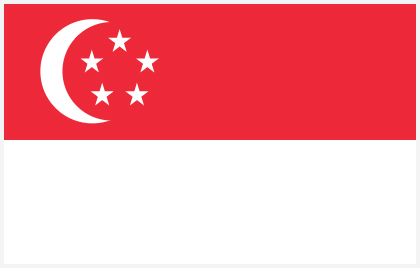
Foundation of Support
Learning system, career and technical education, teachers and principals.
Singapore is an extraordinary success story. Since becoming an independent republic in 1965, it has transformed from an impoverished island with no natural resources and a mostly illiterate population to a country of 5.8 million people whose living standards match those of the most highly-developed industrial nations. From the very beginning, Lee Kuan Yew, the prime minister who led Singapore to this achievement, understood that an educated workforce would be essential to fulfilling his ambitious economic goals.
In 2009, when Singapore participated for the first time in the Programme for International Student Assessment (PISA), the results of Prime Minister Lee’s efforts were already clear. That year, Singapore’s 15-year-olds were among the top performers in all three subjects. In 2015, the nation was first in the world in all three subjects; in 2018, four Chinese provinces outperformed Singapore, but the small island nation continued to outperform every other nation.
At the end of World War II, Singapore implemented the first in a succession of economic development strategies rooted in improved education and training. Since the 1990s, the nation has focused on boosting creativity and capacity for innovation in its students.
In 2004, the government developed the “Teach Less, Learn More” initiative, which moved instruction further away from its early focus on rote memorization and repetitive tasks and toward deeper conceptual understanding and problem-based learning. Educators abandoned the practice of funneling students into ability-based tracks and began sorting them into three different “bands” in secondary school based on their ultimate educational goal. Although students take most of their classes within their bands, they can take classes in other bands depending on their aptitude and interest in a given subject. The goal is to achieve full subject-based banding, with students freely mixing and matching classes from different bands, by 2024.
Singapore’s current priorities for its education system are reflected in the title of its initiative “Every School a Good School.” This set of reforms aims to ensure that all schools have adequate resources to develop customized programs for their students; raise professional standards for teachers; encourage innovation; and foster partnerships between schools and communities. In addition, Singapore launched the “Learn for Life” initiative in 2018 to promote greater flexibility in teaching, learning, and assessment. With more opportunities for self-directed learning in and out of school, Singapore hopes to encourage lifelong learning for all Singaporeans, in ways that bring them satisfaction and meaning.
Despite Singapore’s strong emphasis on educational equity, there remains a large gap between the nation’s highest-performing and lowest-performing students on PISA. This gap, which persists across all three subjects, did narrow somewhat in mathematics and science in the latest round of PISA. In addition, Singapore stands out among OECD countries for its low percentage of low-performing students and high percentage of high-performing students, including a very high percentage of top-performing students with low socioeconomic status. Ten percent of disadvantaged students in Singapore are in the top-performing group compared to an OECD average of three percent.
Quick Facts
Population: 5.98 million Population growth rate: 0.90% Demographic makeup: Chinese 74.2%, Malay 13.7%, Indian 8.9%, other 3.2% Source: CIA World Factbook, 2023
GDP: $578.254 billion GDP per capita: $106,000 (2021 estimate in 2017 dollars) Source: CIA World Factbook, 2023
Unemployment rate: 3.62% Youth unemployment rate: 9.10% Sources: CIA World Factbook, 2023
Services-dominated economy Key services industries: finance Key industrial areas: electronics, chemicals, oil drilling equipment, petroleum refining, biomedical products, scientific instruments, telecommunication equipment, processed food and beverages, ship repair, offshore platform construction, entrepot trade Sources: CIA World Factbook 2021
Postsecondary attainment Ages 25+: 58.3% (2020 est.) Source: World Bank, 2023
Governance Structure
Singapore’s education system is highly centralized. The Ministry of Education oversees kindergarten (ages four to five) through higher education and lifelong learning. The Ministry allocates funding for all schools, sets course syllabi and national examinations, oversees teacher credentialing, manages the teacher and principal evaluation and promotion system, and hires and assigns principals and teachers to schools. Schools are grouped into geographic clusters, each overseen by a superintendent, to provide local support for the Ministry’s policies and initiatives. The cluster superintendents, who are successful former principals, collaborate with principals in their cluster on how to implement the curriculum and which teaching materials to choose from among a set the Ministry approves and strongly encourages teachers to use. The cluster superintendents also facilitate the sharing of resources and best practices between cluster schools.
While the Ministry sets the framework for the educational system, other entities operate within that framework. Independent or semi-autonomous agencies such as the National Institute of Education (teacher training), the Examinations and Assessment Board (national assessments), and the Institute of Technical Education (vocational education) have clearly defined areas of responsibility and work closely with the Ministry.
Planning and Goals
Singapore articulates clear and comprehensive system-wide goals for education. These goals, which the nation revises regularly, emerge from widespread discussion with partners in the system and with the public, as well as from extensive benchmarking of other leading education systems. Singapore structures policy initiatives around its education goals and creates benchmarks to measure progress. For example, in 2013, Singapore held a National Conversation to gather input on a vision for the 2030 education system strategic plan. Goals included improving character and citizenship education, strengthening digital literacy, building more knowledge and understanding of the history and cultures throughout Asia, expanding supports for disadvantaged students, and building more adult education opportunities. In 2022, Singapore launched a year-long initiative to gather public input as part of developing their Forward Singapore road map. Forward Singapore will prioritize equity while reexamining six key pillars of society: empower (economy and jobs), equip (education and lifelong learning), care (health and social support), build (home and living environment), steward (environmental and fiscal sustainability), and unite (Singapore identity).
In addition, Singapore’s leaders monitor educational research and benchmark best practices from around the world so that the system can continue to match the performance of the world’s best.
Education Finance
The Ministry of Education directly funds all schools based on the number of pupils. In addition, all schools receive a set grant (called an Opportunity Fund) to use for their low-income students and students from ethnic minority groups. Although this supplemental funding is distributed by the Ministry, schools can choose how to spend it. The Ministry also provides funding directly to students from low-income families in the form of subsidies, called Financial Assistance Schemes, for educational materials and activities and funds for school meals. In addition, the Ministry in 1970 created the Education Fund, which collects contributions from Singapore residents to both support all students and low-income students through scholarships and by providing textbooks, meals and uniforms for students who need these but do not otherwise qualify for financial assistance.
Accountability
School accountability.
Schools in Singapore conduct annual self-evaluations of their practices and outcomes using the Ministry-developed School Excellence Model, which includes nine criteria for performance. Schools then develop improvement plans based on the results. Additionally, each school is visited by a Ministry-led team of evaluators once every six years; the team typically includes consultants from the Ministry and respected educators, such as university professors and successful school leaders. The visit is intended to validate the self-evaluation, provide feedback to the school and offer support for improvement.
Improvement efforts are organized through Singapore’s school cluster system. Cluster superintendents meet regularly with principals to monitor their improvement efforts. High-performing schools are eligible for awards. The Ministry annually awards schools that demonstrate outstanding achievement in a single year or over a period of years. The highest award, the School Excellence Award, is given to one school each year.
Teacher Accountability
Singapore uses the Enhanced Performance Management System (EPMS) to conduct annual teacher evaluations. EPMS assesses teachers’ performance based on 16 different competencies, including their work in the classroom and their interaction with the greater school community. Teachers first conduct a self-appraisal, and then supervisors evaluate them against the EPMS. These evaluations are qualitative and consist of written feedback rather than numeric scores of specific indicators. Teachers base their professional development plans on EPMS feedback. Principals, alongside the School Staff Developer (in charge of professional learning) and the Cluster Superintendent, co-construct a “Current Estimated Potential” for each teacher using the results of the EPMS. This estimate, or snapshot of the teacher’s short-term career trajectory, is shared with the teacher and used to help them articulate their career goals. Teachers can earn rewards based on EPMS results, including honors and salary bonuses. The Ministry also selects teachers for awards and recognition at the national level.
Supports for Young Children and Their Families
Singapore has several policies in place to support families with children. Working mothers are entitled to 16 weeks of paid maternity leave if their child is a Singapore citizen and they have worked at their company for at least three months. Otherwise, they are entitled to 12 weeks of maternity leave. Fathers are entitled to two weeks of paternity leave. Working parents also receive six days of paid childcare leave per year if their child is under 7 years of age.
In 2008 the government adopted the Enhanced Marriage and Parenthood Package, which includes a “Baby Bonus,” providing cash awards for each child, and a Child Development Account (CDA), providing dollar-for-dollar matching of parent contributions to an account that can be used for health care, childcare, and other purposes. The government also makes an initial grant contribution to each child’s CDA.
Singapore provides universal health care to citizens. The primary form of support is government subsidies, which cover 80 percent of the cost of care in hospitals and clinics. These subsidies are supplemented by the “3Ms”—Medisave, a mandatory savings program; Medishield, catastrophic health insurance; and Medifund, an endowment to support health care for low-income families. In 2013, the government set up Medifund Junior, which provides support for low-income children, and extended the fund’s benefits to include primary care, dental services, prenatal care, and delivery.
In 2016, Singapore piloted KidSTART, which partners with hospitals and community organizations to provide supports for low-income families, including home visits, developmental screenings and referrals, and parent education, from pregnancy until children reach age 3. KidSTART is now a permanent program.
Childcare for children up to age 4 is privately run in Singapore, but the government has taken steps to ensure care remains affordable for all families. In 2009 Singapore created the Anchor Operator scheme (AOP), which provides subsidies to participating centers with a requirement that they cap fees. The government expanded the AOP in 2014, and in 2016 added the Partner Operator scheme (POP) to subsidize additional centers. The government also sets aside 30 percent of childcare slots for low-income families and directly subsidizes their fees. Parents also can use funds from Child Development Accounts to pay for childcare.
Supports for School Aged Children
All students in Singapore receive an Edusave account, to which the government contributes funds so that it can invest in their future. Families can draw on these accounts for any type of educational expense; disadvantaged students receive additional funding. The Ministry of Education also provides financial assistance for students from low-income families. The aid supports school fees and other expenses for students in government or government-aided private schools. Financial aid for independent schools is also available.
These supports are available in the context of a broader safety net for children. The government’s Ministry of Social and Family Development (MSF) administers ComCare, which provides cash grants to low- and moderate-income families on a sliding scale. It also covers long-term assistance needed for care and school-related expenses for children of disabled parents. The MSF also oversees the National Council of Social Service, an umbrella group of 450 private organizations that provide services to Singapore citizens. Services include school-based social work and support for students at risk of dropping out of school.
In Singapore, children ages three through six can attend either a public or private kindergarten or a childcare center. Formerly, the Ministry of Social and Family Development oversaw childcare centers while the Ministry of Education oversaw kindergartens. But in 2013, the government created the Early Childhood Development Agency (ECDA) to coordinate oversight of all early childhood education.
Most childcare centers and kindergartens in Singapore are privately run but licensed by ECDA. A subset of centers caps their enrollment fees in exchange for government subsidies, part of a national effort to increase access to childcare for low- and middle-income Singaporeans. Beginning in 2013, the government opened a small number of public kindergartens to model quality programming and further expand access to early education. In 2017, the Prime Minister announced plans for a fourfold increase in the number of public kindergartens by 2025. To ensure public kindergartens are accessible for all families, the Ministry of Education reserves one-third of the total slots for students whose families earn under a certain income level.
ECDA regulates programs for children ages 4-6 as well as programs for younger children. Data from program inspections are not publicly available. ECDA established the Singapore Preschool Accreditation Framework (SPARK) to accredit centers. Accreditation is voluntary, but there are incentives to participate, including access to government subsidies and to professional development for staff. As of 2017, 40 percent of centers in Singapore had attained SPARK certification. Of these, about 10 percent have also attained SPARK commendation, a mark of especially strong teaching and learning practices.
ECDA has developed the Nurturing Early Learners Kindergarten Curriculum Framework as suggested guidance for children ages four to six. The government does not assess learning outcomes for students in kindergarten or childcare; the first nationwide screening of children’s literacy and numeracy skills takes place in the first month of primary school. A new program—called Mission I’mPossible 2—establishes interdisciplinary school-based teams to screen children in childcare for developmental issues starting at two months old.
Primary and Secondary Education
System structure.
In Singapore, the system includes six years of primary school, followed by four to six years of secondary school, and one to three years of postsecondary school. The curriculum for primary schools is common for all students in years one to four. For years five and six, students can take individual courses at the foundation or standard level. Foundational level courses are designed to provide more support for students. As they enter secondary school, students, their parents, and their teachers jointly agree on one of three bands or “streams” they will join: Express, Normal (Academic), and Normal (Technical). All streams offer the same course of study, but Express is accelerated and Normal (Technical) offers more applied work. In most cases, students’ scores on the Primary School Leaving Examination (PSLE) are the primary determinant of the stream they will join, but parents and students can advocate for different streams if they demonstrate accelerated learning or need more help. Singapore is piloting and implementing a system under which students choose streams for specific subjects, rather than their overall course of study, a practice known as subject-based banding. For example, a student could pursue a technical stream in mathematics, but an express stream in English. Subject-based banding currently exists in all primary schools, and the goal is to have full subject-based banding in all secondary schools by 2024.
In addition to these options, Singapore has four specialized schools for students who perform poorly on the PSLE. These schools offer foundational coursework in mathematics and literacy, alongside vocational offerings leading to skill certificates and extensive social supports. There are also specialized independent schools that focus on the arts, sports, and mathematics and science. These schools receive public funding and use the MOE curriculum, but have more flexibility in their program offerings.
Students who want to apply to university stay in secondary school for an additional two years to take A-level courses, as part of the Integrated Program. Those who do not do that have multiple postsecondary options: Polytechnics, the Institute of Technical Education (ITE), Junior Colleges, a Polytechnic Foundation program and a small set of Arts Institutions. Students choose their postsecondary school based on their secondary school stream as well as results from the General Certificate of Education (GCE) examinations, described in more detail below. Polytechnics offer three-year diploma programs. Graduates may pursue university education after they earn their Polytechnic diploma without taking A-level exams, if they so choose. ITE offers shorter technical or vocational education programs, through National ITE Certificate (Nitec) aligned courses and work-based learning. Students graduate from ITE with a Nitec or Higher Nitec qualification and can then continue their vocational studies at a polytechnic or at university. They can also stay at ITE and earn a technical or work study diploma, which also allows a pathways to slect university programs. Junior Colleges offer two- or three-year pre-university education, preparing students for the required examinations to enroll in universities or for entry into Polytechnics.
Standards and Curriculum
The Ministry of Education oversees the development of the national curriculum, which includes “Desired Outcomes of Education.” The desired outcomes are student excellence in life skills, knowledge skills, and subject discipline knowledge organized into eight core skills and values: character development, self-management skills, social and cooperative skills, literacy and numeracy, communication skills, information skills, thinking skills and creativity, and knowledge application skills.
The primary school curriculum includes ten subject areas: English, mother tongue language (available for Chinese-, Malay- and Tamil-speaking students), mathematics, science, art, music, physical education, social studies, and character and citizenship education. A coding class was added to the curriculum in 2019. And in 2021, the Ministry introduced an updated character and citizenship education curriculum which focuses on mental health and cyber-wellness and on the establishment of peer support structures within every school, among other topics. For primary students who qualify as gifted, Singapore offers individualized enriched curriculum opportunities.
Secondary education varies depending on school and program type. Students in the express and Normal (academic program) are required to take English, mother tongue language, mathematics, science, and humanities (geography, history, and English literature). For students in the Normal (Technical) program, compulsory subjects include English, mother tongue language, mathematics, computer applications, and social studies. There are electives available for both the Technical and Normal program as well.
The Ministry of Education has been very involved with the implementation of its primary and secondary curriculum. During the shift from rote learning to the current model emphasizing student engagement and creativity, Ministry officials were very “hands-on” in schools. They met regularly with school leaders and developed extensive professional learning opportunities for teachers around the new curriculum. However, in recent years, the Ministry has taken a step back, encouraging schools to consider the curriculum as a framework which they should adapt to their students’ needs. The Ministry also encourages secondary schools to differentiate themselves through theme courses or special programs designed to attract students with shared interests.
Assessment and Qualifications
Teachers perform continuous assessment of their students at all levels of education. On a day-to-day basis, this assessment is informal and based on student work in and out of the classroom. Before 2019, all students in primary school took school-based exams throughout the year and at the end of each year. Since then, Singapore has eliminated mid-year exams. Students in Primary 1 and 2 have no exams and do not receive grades. By removing these exams, the government hopes to shift focus away from grades and competition and toward learning for its own sake.
At the end of primary school, all students take the Primary School Leaving Examination (PSLE) in four subjects: English, math, science, and mother tongue. Students take exams at one of two levels, based on the level of subjects they took in years five and six. In 2021, the Ministry began to update the PSLE scoring process. Going forward, students will be graded based on individual performance in subjects rather than benchmarked against each other. These scores will be translated to Achievement Level tiers, which will help students determine their stream for lower secondary education, as well as which school they will attend. Students send their examination scores to up to six lower secondary schools, ranked in order of preference. The schools then choose their students based in large part on their PSLE rankings. That said, the Ministry also allows some schools to admit students based on their talents in academic areas, sports, or co-curricular activities without factoring in PSLE results, to provide greater diversity in student talents and interests. Since 2018, schools have been able to offer up to 20 percent of their places to students through this process, called direct school admission. The Ministry of Education helps place those students who are not accepted into their schools of choice.
At the secondary level, student take subject-based exams, depending on their band. After four years of study, students take O-level exams in the express and N-level exams in the Normal (Technical) program. Students in the Normal (Academic) program can take the N-level exams after four years of study or the O-level exams after five years. Students who wish to study at university take A-level exams after an additional two years of study.
Starting in 2027, the N- and O-level exams will be replaced by a new comprehensive Singapore-Cambridge Secondary Education Certificate (SEC). Students will have the option of an additional year in secondary school to take more rigorous courses.
Learning Supports
Struggling students .
Despite Singapore’s strong emphasis on equitable funding, the most recent results from the Programme for International Student Assessment (PISA) and Trends in International Mathematics and Science Study (TIMSS) exposed a large gap between the nation’s highest- and lowest-performing students. However, the gap has been narrowing in mathematics and science, and educators hope to address academic disparities through early diagnosis and intervention of learning issues. Schools screen students at the beginning of first grade for reading and numeracy skills; those who need extra help (approximately 12-14 percent) are taught in small learning support programs to keep them on pace with their peers. As part of this program, the Ministry funds learning specialists at each school who work with these groups of students.
Students who are still struggling when they reach lower secondary school are offered extra time and support to complete their studies, and teachers may recommend they join the Normal (Technical) stream for most subjects. If students show improvement, they can transfer into a faster-paced band. They can also take courses in different bands if they are only struggling with a particular subject.
Special Education
Whenever possible, the government encourages students with special needs to enroll in mainstream schools, either initially or after having met certain benchmarks in special education. Currently, about 80 percent of all students with special needs attend mainstream schools. To help facilitate their integration, learning support specialists known as Allied Educators help students with conditions such as dyslexia or autism. As of 2018, there was at least one Allied Educator in every mainstream primary and public school, a 40 percent increase over the previous five years. The Ministry has also provided specialized training in special education to a designated group of general education teachers within each mainstream school, to create a strong support system for students with special needs; about 15 percent of teachers in mainstream schools had completed this training by 2019. In addition, since 2020 the Ministry has provided all teachers in mainstream schools with access to online professional learning focused on supporting students with special needs.
In 2019, the Ministry implemented two peer mentoring interventions to support students with special needs in mainstream schools. Circle of Friends allows students with social, emotional or behavioral difficulties to meet with their teacher or Allied Educator along with a group of six to eight of their peers. Over five to eight sessions, the students work together to find solutions for the student in difficulty. Facing Your Fears is a similar program designed to support students suffering from anxiety. In this intervention, groups of two to four students meet with facilitators and Allied Educators to learn self-management strategies over 10 weekly sessions.
For students who need more intensive or specialized assistance, Singapore has 19 government-funded special education schools run by 12 social service agencies. These schools serve populations with highly specific needs: the deaf, the blind, students with autism, or those with the most severe cognitive challenges. Special needs education is available through the postsecondary level, where students with intellectual disabilities are prepared for the workforce through special training programs. The government continues to invest in special education and plans to open seven new schools by 2027. These schools serve less than 2 percent of the total student population.
The Ministry allocates extra funds for special needs students at 150 percent or 300 percent of the base per student cost, depending on whether they attend mainstream or special schools. The Ministry increased spending for special schools by 40 percent from 2015 to 2020 and has pledged to continue this increase. The National Council of Social Services also contributes funding to special schools, specifically for additional social supports.
Digital Platforms and Resources
The Student Learning Space (SLS) provides a library of curriculum-aligned, Ministry-curated resources (e.g., lesson plans, videos, assessments) for all grade levels and subjects. The Ministry assigns teams of teachers to work full-time creating these resources, which are continually updated based on feedback from teachers and students (as is the design of the SLS itself). Singapore announced plans for the SLS in 2013, piloted it in 2017, and expanded it to all schools in 2018. Every student in grades 1-12 has an account to access the SLS. Using templates, teachers create lessons by compiling SLS resources or using a mix of SLS resources and their own materials. Students can also access SLS resources on their own, independent of assignments. Teachers can choose to share the lessons they have created with their peers within the SLS.
In 2020, after students shifted to periodic home-based learning in response to the coronavirus pandemic, Singapore decided to make home-based learning via SLS a permanent feature of the education system. Starting in 2021, secondary school students will have up to two days a month of online learning, and all secondary school students will be provided with a device. Singapore plans to pilot online learning strategies in primary schools to determine the best approach to building these skills for younger students. The Ministry believes that students will benefit from having self-directed learning time at home that complements in-person instruction.
Development of the System
Technical and vocational education gained importance in Singapore at the end of World War II when industrialization created a demand for skilled workers. After attaining independence in 1965, Singapore began investing heavily in vocational education in order to support the country’s very ambitious economic development plans. The Ministry of Manpower worked with economic agencies and industry groups to identify critical workplace needs. Those needs, as well as projections of future needs, were used to inform curriculum planning for vocational education. Singapore created polytechnic institutions in the 1960s as the primary vocational training route for Singaporeans.
Singapore founded the Institute of Technical Education (ITE) in 1992, at a time when vocational education was viewed as a “last resort” for weak students; the five existing polytechnics were not desirable educational options. Singapore wanted to revolutionize vocational education. Spread across a set of state-of-the-art campuses, ITE was designed to be a world-class example of how vocational and technological skills could be translated to a knowledge-based economy.
Today, ITE is filled with simulated and real-world workspaces for students to demonstrate their job skills in a wide variety of high-growth industries. Since 1995, enrollment in vocational education has doubled, and vocational students now make up over 60 percent of the cohort who go on to postsecondary education, with about one-third of those students heading to the ITE and two-thirds to polytechnics.
Recently, Singapore has taken further steps to strengthen its vocational education opportunities for youth and adults. Following the recommendations of the ASPIRE (Applied Study in Polytechnics and ITE Review) commission, in 2016 the government launched SkillsFuture, a national lifelong learning effort. ASPIRE envisioned a coherent workforce-development system, beginning in lower secondary school and extending throughout adulthood. For young people, SkillsFuture includes strengthened education and career guidance, “enhanced” internships, more overseas market immersion opportunities, and the development of individual learning portfolios. For those entering the workforce, it includes apprenticeships, known as “Earn and Learn” programs, and credits toward course fees for work skills-related instruction. And for adults, it includes monetary awards for skills courses, subsidies for mid-career professionals pursuing additional coursework, and fellowships. Anchoring the system is a skills framework and set of qualifications, overseen by the SkillsFuture Council, a body led by the deputy prime minister and including leaders from industry, labor, and government. The framework outlines a body of skills in 34 industry sectors.
Governance and System Structure
Singapore’s career and technical education (CTE) offerings take place primarily at the postsecondary level. At the primary and secondary levels, the emphasis is mainly on career exploration and guidance. A career guidance curriculum has been mandatory since 2014, and the Ministry of Education has created a web portal that enables students to examine their own strengths and interests and explore careers that match them. In addition, students pursuing the Normal (Technical) route in secondary school take coursework that prepares them for entrance exams at the Institute of Technical Education (ITE), Singapore’s primary postsecondary CTE institution.
CTE Programs
ITE offers two-year programs leading to a National ITE certificate (Nitec), with the option of an additional advanced program leading to a Higher Nitec certificate. Starting in 2022, the ITE will introduce a new curriculum that allows students to achieve a Nitec and Higher Nitec in a total of three years instead of four. The new curriculum, which will be phased in over time, is designed to prepare graduates with deeper industry-relevant skills for employment and sufficient foundational skills to allow for lifelong learning. ITE programs are offered in six broad areas: Applied and Health Sciences, Business Services, Design and Media, Electronics and ICT, Engineering, and Hospitality. A technical diploma program (similar to an apprenticeship program) was recently added to the ITE program in Culinary Arts and Engineering, as was a work-study diploma that is offered in a range of areas. ITE requires all students to enroll in data analytics courses and to participate in a three- to six-month internship. The ITE has a reputation for producing highly-skilled graduates, and salaries for ITE graduates have become quite high in recent years. In 2018, 76 percent of ITE graduates found employment within six months of completing school, leading more students to see vocational education as a strong choice for future success.
Another route for secondary graduates who want to pursue technical training is the polytechnics, which offer three-year degree programs in technical fields. Polytechnics now offer nearly 150 diploma programs, and, like the ITE, have worked to remain closely connected with industry, growing and changing alongside Singapore’s economy. Students receive a combination of experiential and classroom-based learning. Up to 40 percent of graduates of postsecondary vocational education pursue a university degree. In many cases they are able to transfer enough credits to complete a bachelor’s degree in two years.
Recent Reforms
In 2020, Singapore’s government announced steps to upgrade the SkillsFuture program with the goal of serving a minimum of 15 percent of the country’s working age labor force per year . Most notably, the plan included another round of financial credits for all adults ages 25 and older to use towards continuing education, plus an additional credit for skills training or retraining for adults ages 40 to 60. These credits can be used in addition to any credits issued since 2016. Individuals must use the new credits by 2025, however. Credits apply to more than 8,000 courses offered by polytechnics, ITE, and universities. SkillsFuture also updated its funding framework to prioritize subsidies for courses that teach in-demand skills and provide career advancement opportunities.
The government has also set ambitious goals to more than triple the number of work-study placements by 2025, double job placements for mid-career workers to 5,500 by 2025, and increase the capacity of reskilling programs for mid-career workers. SkillsFuture also introduced several new mid-career transition programs to help workers upskill during the Covid-19 pandemic, some of which have since been made permanent offerings.
Teacher Recruitment
Only one institution—the National Institute of Education (NIE)—is authorized to prepare teachers, and it offers both a master’s degree and a bachelor’s degree route into teaching. In this way, Singapore limits its teacher recruitment only to those students qualified for the country’s rigorous research universities. Each year, Singapore calculates the number of teachers it will need, and opens only that many spots in the training programs. The selection process is competitive: teaching is a highly-regarded profession in Singapore and students in teacher-education programs receive a stipend during their training. On average, only one out of eight applicants is accepted. Typically, successful candidates have scored at the middle or above on Singapore’s challenging A-level exams. The many other steps in the application process include tough panel interviews that focus on the values, skills, and knowledge that make for a good teacher, as well as intensive reviews of the candidate’s academic record and contributions to school and community.
Teaching salaries in Singapore are largely commensurate with those of other professions. Indeed, the Ministry of Education monitors teacher salaries in relation to other professional salaries and adjusts them to ensure they remain competitive. The maximum salary for a lower secondary teacher is twice the GDP per capita. Teacher salaries increase with years of experience. Successful teachers can earn retention bonuses every three to five years as well as performance bonuses, which can be up to 30 percent of their base salary. Eligibility is determined through annual evaluations that also serve as a basis for coaching and mentoring between teachers.

Teacher Preparation and Induction
The National Institute of Education (NIE) is housed in Nanyang Technological University, one of the most prestigious institutions in Singapore’s higher education hierarchy. All primary and secondary teachers are trained at the NIE. During their training, teacher candidates receive a monthly stipend equivalent to 60 percent of a starting teacher salary, and their tuition is covered by the Ministry of Education. Once they have completed training, teachers must commit to three full years on the job.
The undergraduate teacher-education program is a four-year program that includes 22 weeks of practical experience in schools. The graduate program is a 16-month program that includes 10 weeks of practical experience. Students entering the graduate program first attend the Introduction to Teaching program run by the Academy of Singapore Teachers (AST), a professional learning organization run by teachers. Then, to help them gauge their true interest in teaching, prospective candidates spend a few months to a year working in schools as untrained contract teachers before beginning their coursework.
Both undergraduate and master’s programs are guided by the Teacher Education Model for the 21st Century, a framework that states the values, skills, and knowledge (V3SK) needed for teachers. The curriculum for the undergraduate route includes academic studies—the content the teachers will teach—as well as education studies, curriculum studies, and service learning. Undergraduate students also have opportunities to participate in practicums in other countries. By 2026, teacher candidates and in-service teachers at the NIE will be offered courses on using artificial intelligence (AI) in the classroom under the AI@NIE initiative. AI@NIE is a five-year plan to integrate artificial intelligence into Singaporean classrooms based on research conducted by an NIE task force. AI is already being incorporated into classrooms via text-to-speech, speech evaluation, and other instant feedback tools such as grading of writing and math assessments.
After graduation from either the undergraduate and graduate programs, all beginning teachers take part in a two-year induction program led by the AST and funded by the Ministry of Education. During this period, teachers have a reduced teaching load in order to attend classes and work with a trained mentor.
In 2019, early childhood educator training programs were merged under the National Institute of Early Childhood Development (NIEC), in close collaboration with NIE. NIEC offers certificate-level and diploma-level pre-employment training for postsecondary students as well as continuous education courses for mid-careerists. All students are offered training awards, including full sponsorship and allowance to further incentivize people to join the program. Prospective early childhood teachers take courses and complete practicums and internships. To teach at a public Ministry Kindergarten or Early Childhood Development Agency (ECDA) preschool, educators must have an early childhood diploma qualification or participate in a nine-month sponsorship program as a trainee teacher. To teach at an ECDA infant or toddler site, “educarers” must have an early childhood certificate.
Teacher Career Progression
Singapore’s well-known three-track career ladder is a key component of its teacher development system. Once teachers at the primary and secondary level have demonstrated their eagerness and readiness to take on a new role (generally no sooner than three years into the job) they may choose among three career tracks: the teaching track, the leadership track, and the specialist track. In the teaching track, teachers can work their way up to become Principal Master Teachers. In the leadership track, teachers can be promoted from a leadership position within the school all the way up to the position of Director-General of Education. In the specialist track, teachers are focused on research and teaching policy, with the highest-level position being Chief Specialist. Teachers are not automatically promoted to the next level in any track. Moving along to new roles and responsibilities requires teachers to complete required training or mentorship, as well as demonstrate through the Educator Performance Management System (EPMS) that they have the requisite knowledge, skills, and competencies to do the job well. The EPMS includes an annual evaluation in three areas: Professional Practice, Leadership Management, and Personal Effectiveness. Teachers are expected to set and meet personal goals for their work and to demonstrate improvements in a rubric of competencies during observations of their teaching.
The EPMS is also used to determine how well a teacher fits into a given track. Principals and School Staff Developers observe all teachers for three years in order to determine which career path would best suit them. After teachers choose a career path based on their EPMS score, observations, and their own preference, they may make a lateral move if they feel the pathway does not suit them.
For the first three years of teaching, all teachers receive annual raises. After that, while all teachers may receive annual cost of living increases, substantial raises mainly come with promotion along the career track. Within each track there are 13 stages which offer salary increases independent of teachers’ specific job descriptions that must be earned based on the principals’ recommendation. In addition, annual performance bonuses for superlative work can equal between 10 and 30 percent of a teacher’s salary. The Ministry of Education has also introduced the CONNECT Plan, a long-term retention plan similar to a pension that allows eligible teachers to receive payouts at service milestones (typically every three to five years) and upon retirement; teachers who resign forfeit their accumulated balance.
A similar three-track ladder exists in early childhood teaching. ECDA and SkillsFuture Singapore (SSG) developed a Skills Framework for Early Childhood Care and Education that highlights the 13 occupations for early childhood educators, falling along three tracks: Leader, Teacher, and “Educarer.” Educators can progress within each track and move laterally between them. To achieve promotion along any of the tracks, educators must receive ECDA certification and acquire relevant competencies and professional qualifications. Educarers work with children ages two months to four years in kindergarten and childcare centers while teachers work with children ages four to six. Leaders serve in leadership roles in both kindergarten and childcare centers. In the educarer and teacher track, educators can advance to senior educarer and senior pre-school teacher, respectively. Leaders can advance to pinnacle leader. As teachers advance through and between the tracks, their salaries increase respectively.
Teacher Development
Teachers have access to several types of professional development opportunities. They can improve their practice through courses at NIE or at AST, where offerings range from in-service training to online classes on a variety of subjects related to teaching. Teachers can participate in as many as 100 hours of government-funded professional development per year. The Ministry and NIE also offer scholarship opportunities for teachers seeking master’s and doctoral degrees in Singapore or abroad, either full- or part-time.
In addition, the career ladders are a key component of Singapore’s teacher development strategy. Career ladders ensure that teachers can stay in the profession while taking on new roles and responsibilities and provide the structure for their peer-to-peer mentoring, collaboration, coaching, and development systems. Further, the career ladder guarantees that curriculum development is led by those who know teaching and learning best. For these reasons, the career ladder is not only crucial for Singapore’s strategy to recruit and retain teachers, but also a key element of its professional growth strategies and its approach to overall teaching and learning.
Principal Recruitment, Preparation and Development
Singapore prioritizes developing skilled principals who can ensure that their schools offer high-quality and equitable learning opportunities. In their third year on the job, in consultation with their principal, teachers can choose the leadership track of Singapore’s three-track career ladder. If they continue to demonstrate the right combination of skills and if the role is available to them, they can advance to department head and vice principal. In this way, all principals start out as teachers and then serve in two administrative roles before advancing to school leadership. Department heads and vice principals usually participate in the Management and Leadership in Schools Program run by the NIE, which aims to proactively prepare them for the next stage of the leadership track. Vice principals on the verge of being promoted to principal must participate in a two-day simulation test and interview process during which they respond to real-world scenarios. Those who pass muster then go on to the Leaders in Education Program at the NIE, which incorporates coursework, fieldwork, mentoring, and visits to leaders of other industries and other countries. Both the Leaders in Education Program and the Management and Leadership in Schools Program include training in management theory and practice.
Singapore balances both mandates and positive incentives for professional development. Cluster superintendents, themselves former principals, design professional development and collaborative learning opportunities for principals in their cluster. They also evaluate their principals using the Enhanced Performance Management System, working with each principal to set personal goals for improvement and designing a professional learning plan that helps the principal meet those goals. Principals who have served a minimum of six years are permitted to take one-year sabbaticals at full pay to make international study visits, conduct research, write books, or pursue advanced degrees.
Singapore also supports its principals through an international school leader exchange program, Building Educational Bridges, which focuses on building leaders’ capacity to innovate by learning more about international education systems’ leadership practices. Principals can apply for Ministry funding to cover the cost of this two-week program, offered through the NIE.
- Share this:
- Privacy Overview
- Strictly Necessary Cookies
This website uses cookies so that we can provide you with the best user experience possible. Cookie information is stored in your browser and performs functions such as recognising you when you return to our website and helping our team to understand which sections of the website you find most interesting and useful.
Strictly Necessary Cookie should be enabled at all times so that we can save your preferences for cookie settings.
If you disable this cookie, we will not be able to save your preferences. This means that every time you visit this website you will need to enable or disable cookies again.
Revue internationale d’éducation de Sèvres
Accueil Publications hors numéro Colloque 2014 : L’éducation en As... ATELIER 2 : SAVOIRS, CURRICULA ET... Education in Singapore: for what,...
Education in Singapore: for what, and for whom?
Entrées d’index, mots-clés : , keywords: , géographique : , palabras claves: , texte intégral.
1 Singapore’s education system has been the focus of intense international interest for the past two decades thanks to its students’ repeated successes in cross-national tests of educational achievement such as PISA. The system has been hailed as a model worthy of emulation by countries eager to reform what many governments perceive to be schools that are failing to foster high achievement standards. Could it be possible that Singapore’s story offers valuable lessons for the path to educational success?
2 This article begins by outlining the two major foci of school curricula over the past six decades: supporting national economic growth and fostering social cohesion. These two foci have remained consistent over time and have in fact taken on greater urgency in the face of the numerous challenges posed by globalization. Numerous reform initiatives have restated these foci, which have found their way into the latest policy statements, “Desired Outcomes of Education” and “21 st Century Competencies”.
3 The article then highlights several key features of Singapore’s education system that help better articulate the context within which Singapore’s schools can be better understood. The first of these is the belief in meritocracy, through a system of competitive high-stakes national examinations at primary, secondary and pre-university levels. This belief explicitly promises unequal education outcomes but holds out the offer of equal education opportunities. The second is ability-based streaming at both primary and secondary levels, in other words, the belief in unequal curricular experiences. The third is a balance between centralization of education policymaking and a devolution of decision-making to school heads.
4 The article critiques the growing elitism engendered by the purportedly meritocratic system, which masks an unequal playing field. The education system is a field in which growing income inequalities are played out. These inequalities have been exacerbated by the growing marketization of education over the past three decades. These inequalities also overlap with ethnic inequalities. In response, the government has attempted to blur the harsh boundaries between various streams of schooling and to offer assistance to community-based efforts to improve educational achievement. It has also put in place a greater variety of education pathways, claiming that it values various forms of success and that “every school is a good school”. Another point of critique concerns the impact of these inequalities, along with growing immigration, on the fostering of social cohesion.
Major foci of education policy, 1959 – 2014
5 One distinctive feature of Singapore has been the governing hegemony since 1959 of the People’s Action Party (PAP). This hegemony may be one factor that accounts for relative consistency of purpose in policy-making. When the PAP first assumed political power in a self-governing Singapore after 140 years of British colonial rule, they inherited a disparate hodge-podge of schools operating in four different language media: English, Chinese, Malay, and Tamil. Schooling was far from universal and the schools lacked a sense of common purpose, let alone common curricula or examinations. Besides embarking on a major programme of increasing primary school enrollment (universal primary school enrollment was a reality by 1966), the PAP also began unifying curricula, examinations, and teacher qualifications and salaries. The advent of political independence (after a brief period of political union within Malaysia) in 1965 added impetus to the drive to institute two major foci for education in a new nation: supporting national economic growth and fostering social cohesion in a multi-ethnic, multi-religious population. In addition, the number of privately run schools was rapidly reduced in order to establish centralized control over policymaking, regulation, and funding. In order to support economic growth, emphasis was placed on proficiency in English, mathematics and science (with the relative marginalization of other subjects) at primary, secondary and pre-university levels. At the same time, a variety of daily rituals was instituted in schools in order to promote social cohesion and national identity. These rituals included the recitation of the national pledge, raising of the national flag, and singing of the national anthem.
6 These two major foci have remained consistent over time and despite numerous reform initiatives over the past six decades. For example, the publication in 1998 of the Ministry of Education’s “Desired Outcomes of Education” document (which was subsequently revised in 2009) mentions outcomes such as “lov[ing] Singapore” and “be[ing] enterprising and innovative”. In 2009, a set of “21 st Century Competencies” was published, once again highlighting the need for “civic literacy” and “harmony”. These foci have received renewed emphasis in the challenges posed by the need to remain competitive within the global economy, as well as by the advent of large-scale immigration over the past two decades. This immigration has resulted in the latest population census revealing that about 37 percent of the population of 5 million consists of non-citizens.
Key features of Singapore’s education system
7 In order to further understand Singapore’s education system, several key features are highlighted. The first is meritocracy, which the PAP has enshrined as a founding myth. The official rhetoric claims that meritocracy offers everyone fair educational opportunities and is the most efficient way to select talent based on individual hard work and merit (as demonstrated through individual performance in a series of competitive high-stakes national examinations). It is important to recognize that meritocracy explicitly promises unequal educational outcomes.
8 The second feature is the belief in ability-based streaming, as part of the belief that individual differences in ability require unequal curricula. Streaming was institutionalized at the primary level at the end of 1979 and at the secondary level at the end of 1980. Based on their performance in national examinations, students would be divided into various streams, with access to different subjects, different levels of complexity in subject coverage, and different terminal examinations.
9 The third feature is the balance between the heavy centralization of policymaking that was mentioned earlier and the gradual devolution of decision-making to school heads. The institution of greater school autonomy began in the 1980s in the form of independent schools and autonomous schools at the secondary level, and has now evolved into more decision-making freedom in terms of staff deployment and curricula offerings.
Emerging dilemmas and contradictions
10 Over the past decade, there has been growing evidence that the claims of a level playing field have yet to be realized and that in fact, the system of meritocracy as practiced has fostered elitism (through the privileging of high-ability students and prestigious schools). The government itself has been forced to publicly acknowledge this phenomenon in the face of growing income inequalities. In response, it has attempted over the past decade to replace streaming with banding at the primary level, and to blur the distinctions between streams at the secondary level. One unfortunate face of income inequalities is their overlap with ethnic inequalities. In this connection, Singapore’s largest ethnic minority, the Malays (comprising about 14 percent of the population), and to a lesser extent the Indian ethnic minority, has fared relatively worse than the majority ethnic Chinese in national examinations. Over the past three decades, the government has offered assistance to various ethnic community-based self-help groups to improve educational achievement. However, these efforts have yet to result in a substantial narrowing of educational gaps.
11 The interschool inequalities and social inequalities may have been exacerbated by the rapid marketization of education (e.g. in the promotion of school choice and competition) since the 1980s. The advent of aggressive interschool competition for students, and for academic as well as non-academic results, has led to a stratification of students and schools, especially at the secondary level. The further diversification of education choices and pathways over the past decade has done nothing to lessen these inequalities. Despite government claims that “every school is a good school” and that different forms of educational success are to be valued, there is little evidence that the middle-class rush to engage private tutors and to enroll their children in prestigious schools has abated.
12 Another problematic aspect of education in Singapore is the impact of these inequalities on social cohesion. Furthermore, the large-scale immigration over the past two decades has raised questions over national identity and whether new immigrants can successfully be integrated. A major government response has been the institution of a revised “Character and Citizenship Education” curriculum in 2011 that has broadened the meaning of citizenship to incorporate cross-cultural competencies.
13 This article has surveyed Singapore’s education system and has pointed out several key features and trends. Singapore’s early successes in boosting students’ educational achievement are probably evidence of the value of centralized and focused education policymaking. However, far from offering easy answers or models for the rest of the world, Singapore’s example highlights the existence of social and educational inequalities even in a system that is lauded for its relative success. It also brings into focus the difficulty of undoing or reversing social beliefs once they have become entrenched.
Pour citer cet article
Référence électronique.
Jason Tan , « Education in Singapore: for what, and for whom? » , Revue internationale d’éducation de Sèvres [En ligne], | 2014, mis en ligne le 05 juin 2014 , consulté le 10 avril 2024 . URL : http://journals.openedition.org/ries/3856 ; DOI : https://doi.org/10.4000/ries.3856
Jason Tan completed his Masters in Education in education and national development at the University of Hong Kong and his doctoral studies in comparative education at the State University of New York at Buffalo. He is currently associate professor in policy and leadership studies at the National Institute of Education in Singapore. Jason is an international editorial board member of several international journals, including Asia Pacific Journal of Education and Globalisation, Societies and Education . His most recent publications include Education in Singapore: Taking Stock, Looking Forward , Pearson, Singapore, 2012. E-mail : [email protected]
Droits d’auteur
Le texte et les autres éléments (illustrations, fichiers annexes importés), sont « Tous droits réservés », sauf mention contraire.
- Géographique
Numéros en texte intégral
- 94 | décembre 2023 Enseignant, un métier d’avenir
- 93 | septembre 2023 L’enseignement des mathématiques
- 92 | avril 2023 L’expérience du handicap à l’école
- 91 | décembre 2022 Les syndicats d’enseignants au xxi e siècle
- 90 | septembre 2022 Travailler en collaboration à l’école
- 89 | avril 2022 La santé à l'école
- 88 | décembre 2021 (S’)Éduquer par l’engagement
- 87 | septembre 2021 Les valeurs dans l’éducation
- 86 | avril 2021 L'oral dans l'éducation
- 85 | décembre 2020 La recherche en éducation
- 84 | septembre 2020 Croyances et pratiques professionnelles des enseignants
- 83 | avril 2020 Réformer l’éducation
- 82 | décembre 2019 Les privatisations de l'éducation
- 81 | septembre 2019 La sanction en éducation
- 80 | avril 2019 La pédagogie universitaire
- 79 | décembre 2018 Figures de l’éducation dans le monde
- 78 | septembre 2018 Accueillir tous les enfants à l’école : la question de l’inclusion
- 77 | avril 2018 Conflits de vérités à l’école
- 76 | décembre 2017 La fragmentation des systèmes scolaires nationaux
- 75 | septembre 2017 Musique et éducation
- 74 | avril 2017 Les enseignants débutants
- 73 | décembre 2016 Ce que l’école enseigne à tous
- 72 | septembre 2016 Confiance, éducation et autorité
- 71 | avril 2016 Formation professionnelle et employabilité
- 70 | décembre 2015 Les langues d’enseignement, un enjeu politique
- 69 | septembre 2015 Pourquoi enseigner l’histoire ?
- 68 | avril 2015 L'éducation en Asie
- 67 | décembre 2014 Pédagogie et révolution numérique
- 66 | septembre 2014 L’école dans les médias
- 65 | avril 2014 Le financement de l’éducation
- 64 | décembre 2013 Les espaces scolaires
- 63 | septembre 2013 L’école et la diversité des cultures
- 62 | avril 2013 Les attentes éducatives des familles
- 61 | décembre 2012 Enseignement et littérature dans le monde
- 60 | septembre 2012 Le métier de chef d'établissement
- 59 | avril 2012 Éducation et ruralités
- 58 | décembre 2011 Les ONG et l'éducation
- 57 | septembre 2011 Le plaisir et l'ennui à l'école
- 56 | avril 2011 Le curriculum dans les politiques éducatives
- 55 | décembre 2010 Former des enseignants
- 54 | septembre 2010 Palmarès et classements en éducation
- 53 | avril 2010 Qualité, équité et diversité dans le préscolaire
- 52 | décembre 2009 Un seul monde, une seule école ?
- 51 | septembre 2009 Un renouveau de l’enseignement des sciences
- 50 | avril 2009 En classe : pratiques pédagogiques et valeurs culturelles
- 49 | décembre 2008 Quel avenir pour les études en sciences humaines ?
- 48 | septembre 2008 L’école et son contrôle
- 47 | avril 2008 Enseigner les langues : un défi pour l'Europe
- 46 | décembre 2007 L’émergence d’une autre école
- 45 | septembre 2007 L’enseignement supérieur, une compétition mondiale ?
- 44 | avril 2007 L'élève, futur citoyen
- 43 | décembre 2006 Que savent les élèves ?
- 42 | septembre 2006 L'éducation artistique
- 41 | avril 2006 École primaire, école de base
- 40 | décembre 2005 L'éducation dans le monde
- 39 | septembre 2005 La formation des élites
- 38 | avril 2005 Les défis de l'orientation dans le monde
- 37 | décembre 2004 Diplômes et examens de l’enseignement secondaire
- 36 | septembre 2004 École et religion
- 35 | avril 2004 Décrochages et raccrochages scolaires
- 34 | décembre 2003 La formation professionnelle initiale: une question de société
- 33 | septembre 2003 L'enseignement des langues vivantes à l'étranger : enjeux et stratégies
- 32 | avril 2003 Le processus de décision dans les systèmes éducatifs
- 31 | décembre 2002 Les parents et l'école
- 30 | septembre 2002 Le métier d’enseignant en Europe
- 29 | avril 2002 L'élève aujourd'hui : façons d'apprendre
- 28 | 2000 Les grands débats éducatifs aujourd'hui
- 27 | 2000 Les grands débats éducatifs aujourd'hui
- 26 | juin 2000 L'évaluation des systèmes éducatifs
- 25 | 2000 Le droit à l'éducation : vers de nouveaux contenus pour le XXIe siècle
- 24 | 1999 Le droit à l'éducation : vers de nouveaux contenus pour le XXIe siècle
- 23 | 1999 La formation ouverte et à distance
- 22 | 1999 Dimension économique des politiques éducatives
- 21 | mars 1999 La formation des enseignants II
- 20 | décembre 1998 La formation des enseignants I
- 19 | septembre 1998 Langue maternelle, langue d'enseignement
- 18 | juin 1998 Les technologies nouvelles
- 17 | 1998 Enseigner la diversité culturelle
- 16 | Décembre 1997 La formation tout au long de la vie
- 15 | 1997 Les grands débats éducatifs aujourd’hui
- 14 | 1997 L'éducation scientifique
- 13 | 1997 Ruptures politiques, enseignement de l'histoire
- 12 | 1996 Programmes et politiques éducatives
- 11 | 1996 L'évaluation des élèves
- 10 | 1996 L’ecole en milieu rural
- 09 | 1996 Des langues vivantes à l’école
- 08 | 1995 L’inspection : un nouveau métier ?
- 07 | 1995 Enseignement bilingue
- 06 | 1995 Former les enseignants à l'international
- 05 | 1995 Éthique, école et société
- 04 | 1994 Diriger un établissement scolaire
- 03 | 1994 Les langues régionales et l'Europe
- 02 | 1994 La lecture en questions
- 01 | 1994 Approches comparatives en éducation
Publications hors numéro
- | 2019 Colloque 2019 : Conditions de réussite des réformes en éducation, 12-14 juin 2019, CIEP
- | 2014 Colloque 2014 : L’éducation en Asie en 2014 : Quels enjeux mondiaux ? 12, 13 et 14 juin 2014, CIEP
- | 2009 Colloque 2009 : Un seul monde, une seule école ? Les modèles scolaires à l'épreuve de la mondialisation, 12, 13, 14 mars 2009 - CIEP
Tous les numéros
Présentation.
- Soumettre un article
- Commander un numéro / s’abonner
Informations
- Mentions légales
- Politiques de publication
Suivez-nous
Lettres d’information
- Lettre de la Revue internationale d’éducation de Sèvres
- La Lettre d’OpenEdition
Affiliations/partenaires

ISSN électronique 2261-4265
Voir la notice dans le catalogue OpenEdition
Plan du site – Crédits – Mentions légales – Flux de syndication
Politique de confidentialité – Gestion des cookies – Signaler un problème
Nous adhérons à OpenEdition Journals – Édité avec Lodel – Accès réservé
Vous allez être redirigé vers OpenEdition Search

Who we are, how to contact us, and where to learn more.

- About Moovaz
- Country & City Guides
- Covid-19 Updates
- Relo Checklist
- Employee Relocation

- Global Citizen Blog
Your source of inspiration, motivation, information and more to spur your next move. Browse Now
- November 10, 2021
- Education , Singapore , The Finder
Singapore’s education system has consistently been praised as one that is highly successful and competitive. The country is ranked high in international league tables like OECD’S Programme for International Student Assessment ( PISA ). It has also been placed under the top ten in rankings for countries with the best education systems in 2020.
With a flourishing economy and business hub, education in Singapore plays a big part in creating bright and successful leaders. The importance of education is not overlooked by the government, as Singapore’s government spends 20 percent of the national budget on education itself.
Early childhood education (known as nursery or kindergarten), although not compulsory and funded almost entirely by the private sector, is a popular choice for parents in Singapore.
Singapore’s main education system is divided into 6 years of primary school and 4 to 5 years of secondary, both of which are completely compulsory . Upon graduation, students can then enrol into optional post-secondary education which is around 1 to 3 years.
After that, many students decide to further their studies by applying to university. If you’re curious about universities in Singapore, head over here for the ultimate guide.
As a culturally diverse country, you should have no worries or qualms about your child getting one of the best educations in the world. The country boasts multiculturality and even has 50,000 foreign students between the ages 13 to 23. With multiple international schools that can cater to your child, Singapore might be one of the best places for your child to learn and grow.
So, if you’re an expat looking to enrol your child into the education system in Singapore, it’s important to understand the fundamentals so that you can weigh the best options for your child. From public schools to international schools, this guide will explain education in Singapore so that you can make informed choices.
Table of Contents
Types of schools in Singapore
If you’re unfamiliar with Singapore’s education system, here’s a brief breakdown:
- Early childhood education (up to 6 years old)
- Primary school education (6 years for ages between 7 to 12)
- Secondary school education (4 to 5 years for ages between 13 to 16/17)
- Post-secondary school education (1 to 3 years)
Government schools

If you’re thinking about applying to a government school, here’s what you need to know:
- You or your child should have the ability to speak and write English fluently since all classes in mainstream schools are taught in English. The admissions tests for you or your child will also be conducted in English.
- The education level of your child also has to be no more than 2 years older than the appropriate age, so that they can keep up with classes and the current syllabus.
- You or your child will need a Student’s Pass to study in a government-owned school. This is unless you hold a Dependant’s Pass or Immigration Exemption Order. You can apply for a student pass here .
- Fulfill vaccination requirements for measles and diphtheria. Find out more here .
- Submit parent or caregiver’s particulars. If you’re using a caregiver’s particulars, they should be of Singapore citizenship and over 21 years old.
- If your child is attempting to enter Secondary school level education, they need to have completed the Primary School Leaving Examination (PSLE) first.
Find out more about the admission process for international students entering public government-funded schools here .
If you’re entering yourself or your child into a government school, rest assured that you’ll receive high-quality education with a variety of electives, subjects and student development programmes.
There are autonomous government schools, also known as government-funded schools, that follow the national syllabus while offering a wider range of programmes to enrich your or your child’s learning experience. The Special Assistance Plan (SAP) schools also give students an option to immerse themselves in the Chinese language and culture.
Although, be warned, that as a foreigner or expat, you’ll be paying a much higher school fee than local Singaporean students. Find out more about school fees here .
Private schools

Private schools or independent schools are not usually government-funded and have their own flexibility regarding school fees and syllabus. There are over 700 registered private schools in Singapore. While they usually offer GCE-O/A Level examinations, independent schools are not required to follow the government school syllabus or classes.
These independent schools are usually catered towards international students. Find out more about private schools he r e . However, be warned of the much higher fees that you’ll have to splurge on private schools, where the annual fees range from $1,800 to a staggering $45,000.
Singapore also has numerous international schools, catering for the children of expats and foreigners who have moved to Singapore.
Despite the higher fees, international schools will be immersing your child in a culture of strong global and internationalism. Your child will be surrounded by other children of global citizens and may feel more at ease with children who are in similar situations as theirs. It will also make transition for your child easier in terms of adapting to their new school and environment.
Specialised independent schools (SIS) are another option for your child, with specialised education catering to students with talent and interests in other subjects like Mathematics and Science, the Arts and Sports. The four SIS schools available in Singapore are:
- NUS High School of Mathematics and Science (Mathematics, Science, Technology and Engineering)
- School of Science and Technology (Science, Technology, Aesthetics, Engineering and Mathematics)
- Singapore Sports School (Sports)
- School of the Arts (Visual, Literary and Performing Arts)
If you’re interested in enrolling yourself or your child into private schools, a list of private schools can be found here .
Curriculum in Singapore
National curriculum.
For early childhood education, Singapore’s Ministry of Education ( MOE ) created the Nurturing Early Learners (NEL) Framework that supports preschool curriculum development in Singapore. The NEL Framework is for children from 4 to 6 with the aim of nurturing children’s curiosity, encouraging active learning and fostering their competence.
Find out more about the NEL Framework here .
The curriculum for Primary school includes 6 years of studying the following subjects:
- English Language
- Mother Tongue Language (MTL)
- Mathematics
- Physical Education
- Social Studies
- Character and Citizenship Education
Find out more about Primary school education here .
Secondary school education has multiple courses available to cater to students who have different strengths and talents. Based on a student’s results for PSLE, they can enter Express, Normal (Academic) and Normal (Technical).
Express is a four-year course that leads to GCE O-Level examination, with subject streaming occurring in the second year of studies. Students can also enter the Express Integrated programme, which is a six-year course leading to the GCE-A Level examination, skipping the GCE O-Level examination.
Some subjects offered includes:
- Mother Tongue Languages
- Arts Education
- Principle of Accounts
The curriculum in international or private schools differ from school to school, so it is important to check the international schools you’re interested in before applying. Some schools might not follow the national curriculum in Singapore and have their own syllabus instead.
Examinations
The PSLE is a national exam taken by every student at the end of their sixth year in Primary school. Established by MOE, this national examination guides the child to a suitable academic programme in Secondary school to ensure their comfortable learning progress. Students will then enter a secondary school studying subjects where their academic strengths lie in.
Students can also register as private candidates for PSLE here .
GCE O-Level
The GCE O-Level, also known as the Singapore-Cambridge General Certificate of Education Ordinary Level, is a national examination held annually in Singapore. The national examinations are conducted by both MOE, SEAB and UCLES .
At the end of their fourth year in Secondary school (Express), students sit for the O-Level examinations based on the subjects taken during their secondary school education. Students from the Normal Academic stream take this national examination at the end of their fifth year of secondary school. Approximately 30,000 students in Singapore take the GCE O-Level exam each year. After finishing the GCE A-Level, students can choose to go to a post-secondary school educational institute of their choice, usually being Junior College, Polytechnic or NIE.
GCE A-Level
The GCE A-Level, also known as the Singapore-Cambridge General Certificate of Education Advanced Level, is also another national examination held annually in Singapore. Conducted by MOE, SEAB AND UCLES, this examination is usually taken by students post-secondary level of education. Every student entering Junior College (JC) will have to take the GCE A-Level at the end of their second year of studies.
Subjects taken at A-Level are usually a range of H1 to H3 subjects that are chosen at the beginning of their two years at JC. The General Paper (H1) is a compulsory subject that every student has to take. It develops students’ ability to think critically and communicate their ideas clearly while showing a clear understanding and knowledge of global and local issues. After finishing their GCE A-Levels, students are free to apply for tertiary education and head to a university of their choice.
All in all, education in Singapore has consistently been praised as highly successful and competitive, a perfect place to receive an education for international students and expats alike. It’s important to consider whether to enrol into an international or public school when studying in Singapore, and to ensure that your child is learning at a pace that’s comfortable for them.
Feeling ready to make the big move?
Head over here to begin your journey Or start ticking off your relocation checklist here
Still unsure?
Learn more about Singapore here Explore more destinations here

Join the Moovaz Global Citizen Community
Get inspiration, motivation, information and more to kickstart your potential next chapter in life.
© 2023 Moovaz. All rights reserved

- Privacy Overview
- Strictly Necessary Cookies
- 3rd Party Cookies
- Cookie Policy
This website uses cookies so that we can provide you with the best user experience possible. Cookie information is stored in your browser and performs functions such as recognising you when you return to our website and helping our team to understand which sections of the website you find most interesting and useful.
Strictly Necessary Cookie should be enabled at all times so that we can save your preferences for cookie settings.
If you disable this cookie, we will not be able to save your preferences. This means that every time you visit this website you will need to enable or disable cookies again.
This website uses Google Analytics to collect anonymous information such as the number of visitors to the site, and the most popular pages.
Keeping this cookie enabled helps us to improve our website.
Please enable Strictly Necessary Cookies first so that we can save your preferences!
More information about our Cookie Policy
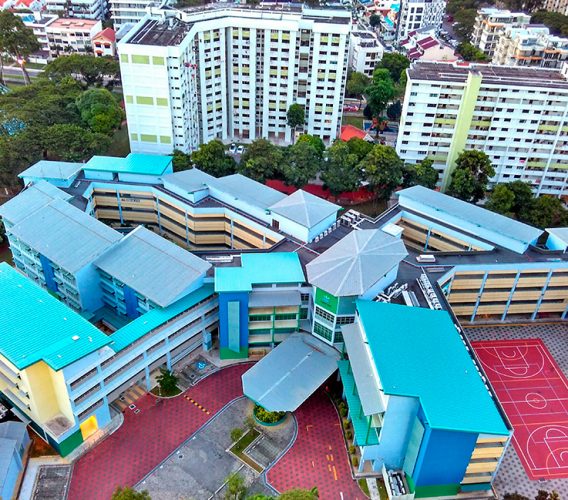
System of Education in Singapore
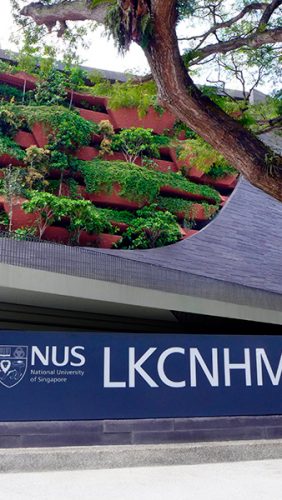
Singapore Education Facts

Why Singapore’s School System Is So Successful?
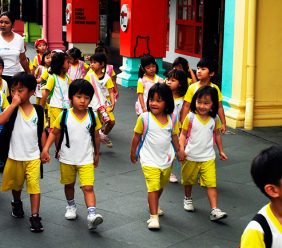
Childhood Education Methods in Singapore
If you want to study abroad, Singapore is a great place for you. It is considered to be a country with very productive and very competitive education that provides its graduates with internationally recognized degrees. Some of the world-top universities are situated exactly in Singapore and the cost of study here is quite affordable. Singapore has a lot to offer both to its citizens and to newcomers, and here are the main five benefits of studying in this innovative country.
1. Though for many years Singapore used to follow a traditional British-based system of education, things changed over the last decade and today Singapore is considered to be a country with one of the best education systems in the world that is aimed to meet the needs of individuals and seeks to nurture talents.
2. Singapore is considered to be a country with a very stable economy. According to the World Bank’s report, it was ranked 3rd among 145 countries in the terms of doing business. Furthermore, Singapore was ranked among top countries with competitive economies processing great innovative ability and a solid macro economy on the Swiss based world Economic Forum.
3. Any international student will be able to become a part of rich multi-cultural society, represented by various ethnic groups, including Chinese, Malays, Indians, and Eurasians. Furthermore, anyone who comes to get an education in Singapore will be able to enjoy the country's high standard of living.
4. If you come to Singapore, you will be able to enjoy its high-developed telecommunications and an internet penetration rate of 42%, available in all parts of the island. Also, the country is well connected both via sea and air and is often recognized for its quality and efficient land transport system.
5. Though the country is small, it is full of attractions and activities for every taste, so everyone here can enjoy a vibrant city lifestyle. Located right in the hub of Asia, Singapore is also considered to be a great place to start your exploration of the Southeast Asian region.
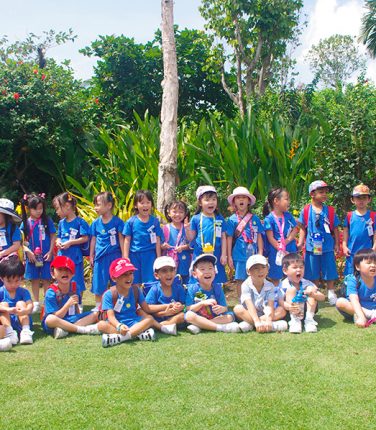
The Attitude of Singapore Parents Towards Education System

Education Enrichment Programs for Singapore Kids
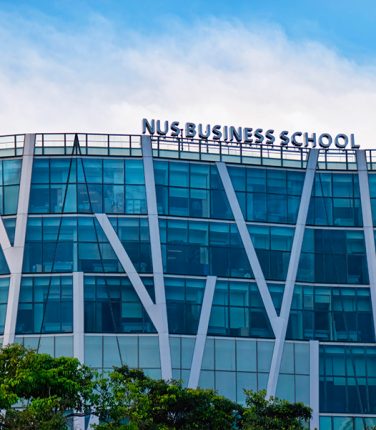
Education in Singapore for Foreigners
The Straits Times
- International
- Print Edition
- news with benefits
- SPH Rewards
- STClassifieds
- Berita Harian
- Hardwarezone
- Shin Min Daily News
- SRX Property
- Tamil Murasu
- The Business Times
- The New Paper
- Lianhe Zaobao
- Advertise with us
Off to uni in Japan and Germany: More Singaporeans choosing road less travelled when studying abroad
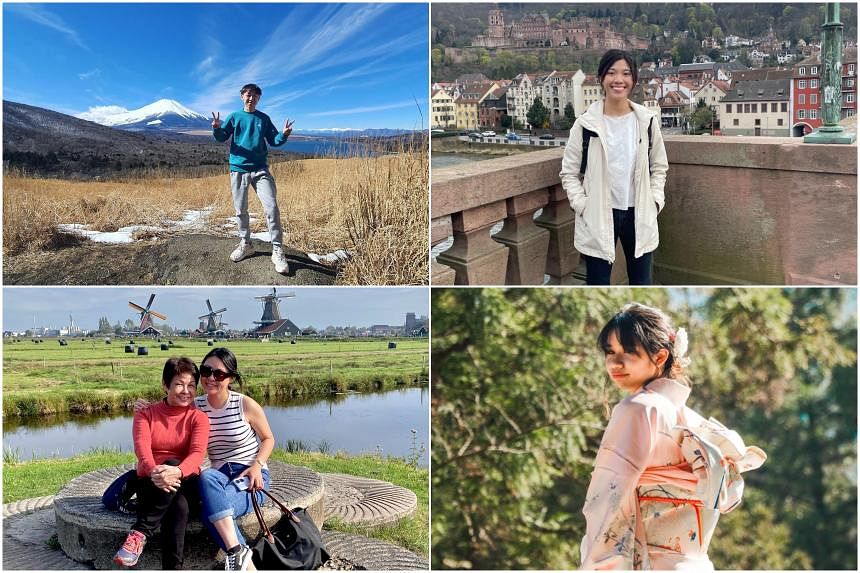
SINGAPORE – The overwhelming majority of Singaporeans pursuing their studies abroad do so in one of three countries: the United States, Britain and Australia.
Nearly eight in 10 local students heading overseas made a beeline for these three countries in 2021, according to Unesco data on the global flow of higher-education students.
However, a small but growing cohort of Singaporean undergraduates are charting a less-trodden path, towards countries such as the Netherlands, Germany and Japan.
Singaporean degree-seekers in the Netherlands rose more than twofold from 32 in 2012 to 109 in 2022, according to Nuffic, the Dutch organisation for internationalisation in education.
In Germany, that figure increased from 167 in 2013 to 266 in 2022, according to the German Academic Exchange Service. For Japan, that number surged from 156 in 2008 to 287 in 2022, figures from the Japan Student Services Organisation reveal.
Singaporean students who enrolled in universities in these alternative academic destinations say they did so for reasons of affordability, flexibility and the quest for a unique international experience.
Studying in these non-anglophone destinations was more financially feasible for themselves and their families. For instance, tuition fees for international students in the Netherlands typically range between €9,000 (S$13,200) and €20,000 a year. Fees in Japan average around 820,000 yen (S$7,300) to 1,100,000 yen a year, while German universities generally do not charge tuition fees as public higher education is free.
In contrast, the average tuition fee for international students in Britain stands at £22,200 (S$37,500), while typical fees for international students in Australia are between A$20,000 (S$17,700) and A$45,000 a year. In Singapore, annual tuition fees at most public autonomous universities for Singaporeans costs between $7,500 and $12,700 after subsidies, depending on the course.
Students who spoke to The Straits Times say the relatively lower fees to study in the Netherlands, Germany and Japan give them a chance to spread their wings and live on their own without compromising on the quality of their degree, when they might otherwise not be able to afford to study overseas.
Ms Ruth Luk, 28, moved to the Netherlands in 2021 to pursue a bachelor’s degree in business at Tilburg University in North Brabant. That decision came after doing the sums, and realising that with two years of savings from her role as a job coach at the Autism Resource Centre (Singapore) and taking a student loan from a local bank, pursuing an education in the Netherlands was within her reach.
Her yearly tuition came up to €10,000, which she covered using her student loan. Her parents did not have to fork out any money. She estimates that she spent around €11,000 a year on living expenses, due to the relative affordability of her chosen city. She also did part-time jobs, tutoring and delivering food, in Tilburg.
She is glad for her choice, as the higher fees and living costs in the big three study destinations (Australia, Britain and the US) would have meant being saddled with “a more crippling” debt upon graduation.
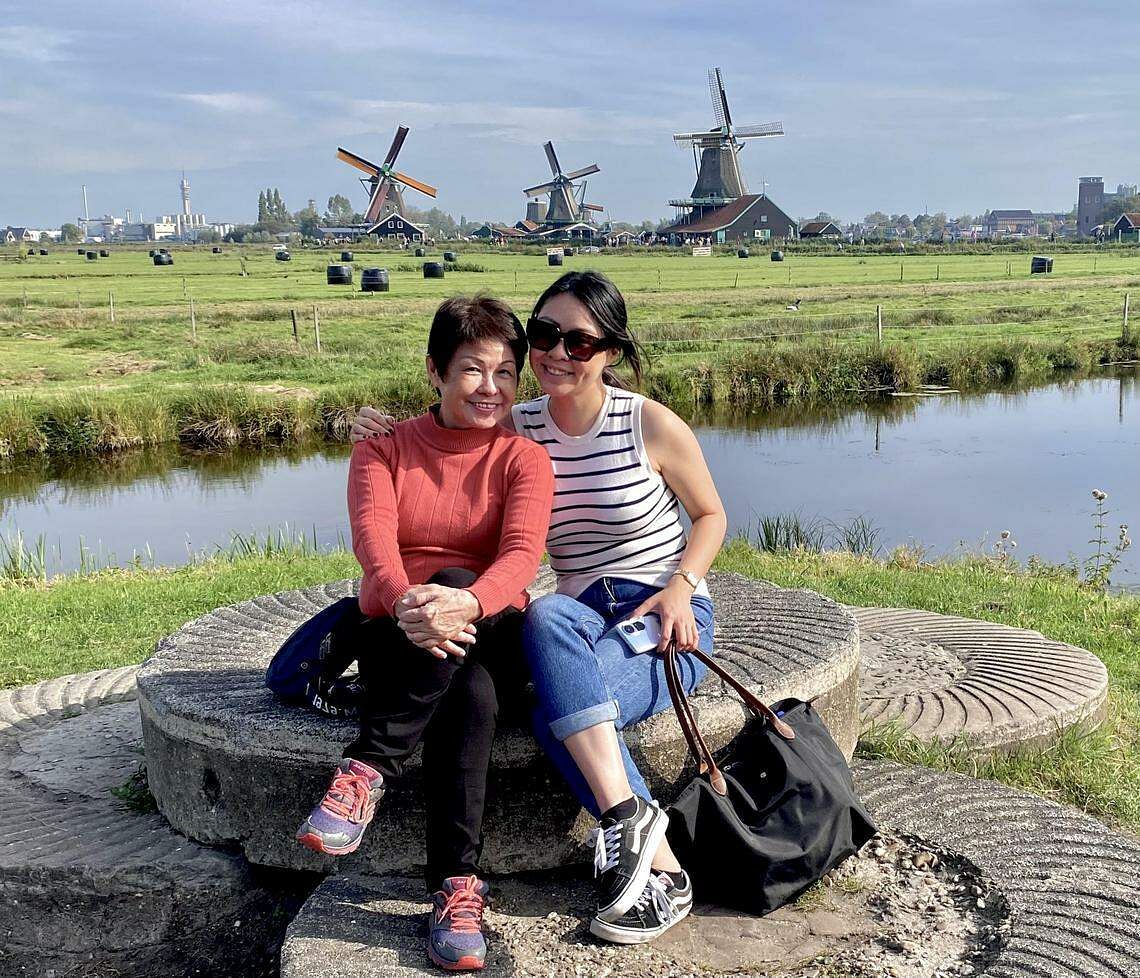
For Ms Sabrina Suhaimi, 22, who initially applied only to industrial and product design programmes in the US and Britain, Japan was not on her shortlist. But the Covid-19 pandemic derailed her plans, and she started applying widely.
“One of my biggest reasons for picking Japan and sticking to it was because I could gain independence really quickly,” says the fourth-year student at Kyushu University’s undergraduate programme in interdisciplinary science and innovation, which is taught in Japanese and English.
Her tuition fees worked out to an affordable 535,800 yen a year. With the scholarship she received from her university, and by working part-time in retail and teaching in Fukuoka, she could fund her studies without monetary support from her parents by her second year in the Japanese city.
It helped that the relatively lower costs of living in Fukuoka – compared with cities such as Tokyo and Singapore – kept her rental and grocery expenses low. The main challenge for Ms Sabrina in terms of costs was finding affordable halal meal options, which were often double the price of non-halal ones, there.

Ms Pek Siying, a 21-year-old pursuing a medical degree in Heidelberg, Germany, says: “Studying at a university here was probably my best shot at trying to adult.”
By that, she means being able to afford a studio apartment rental at €600 a month, away from friends and family. She feels that renting alone and becoming a young adult among a wholly new community of friends are things not easily found among those in their 20s living in Singapore and other anglophone countries.
She has met only two other Singaporeans on campus, both of whom have since graduated, compared with the scores of Singaporeans enrolled in popular British universities. For example, University of Bristol has 250 Singaporean students enrolled now, while University College London has 669.
Plus, medical school fees at Heidelberg University sets her back about €3,000 a year, a fraction of what it costs elsewhere. Medical school fees typically cost more than £40,000 ($68,000) a year in Britain, and more than A$60,000 a year in Australia .
Beyond cost savings
But it was not just economics that drove these students to their countries of choice. A common thread among these students was the quest to escape from the pressure-cooker and grade-focused environment in Singapore.
Ms Pek, who had set her sights on a career in the life sciences since she was in Secondary 4, decided on Heidelberg University because of its stellar medical faculty. “Applying for medicine locally was too competitive, and I wasn’t successful,” she says.
Heidelberg University is the top-ranked university in Germany in the QS World University Rankings for Life Sciences and Medicine. Internationally, it is ranked no. 39, six places behind the National University of Singapore.
Studying there was an easy choice that leveraged Ms Pek’s German-language skills – which she pursued as an A-level subject – in addition to being far cheaper than other alternatives.
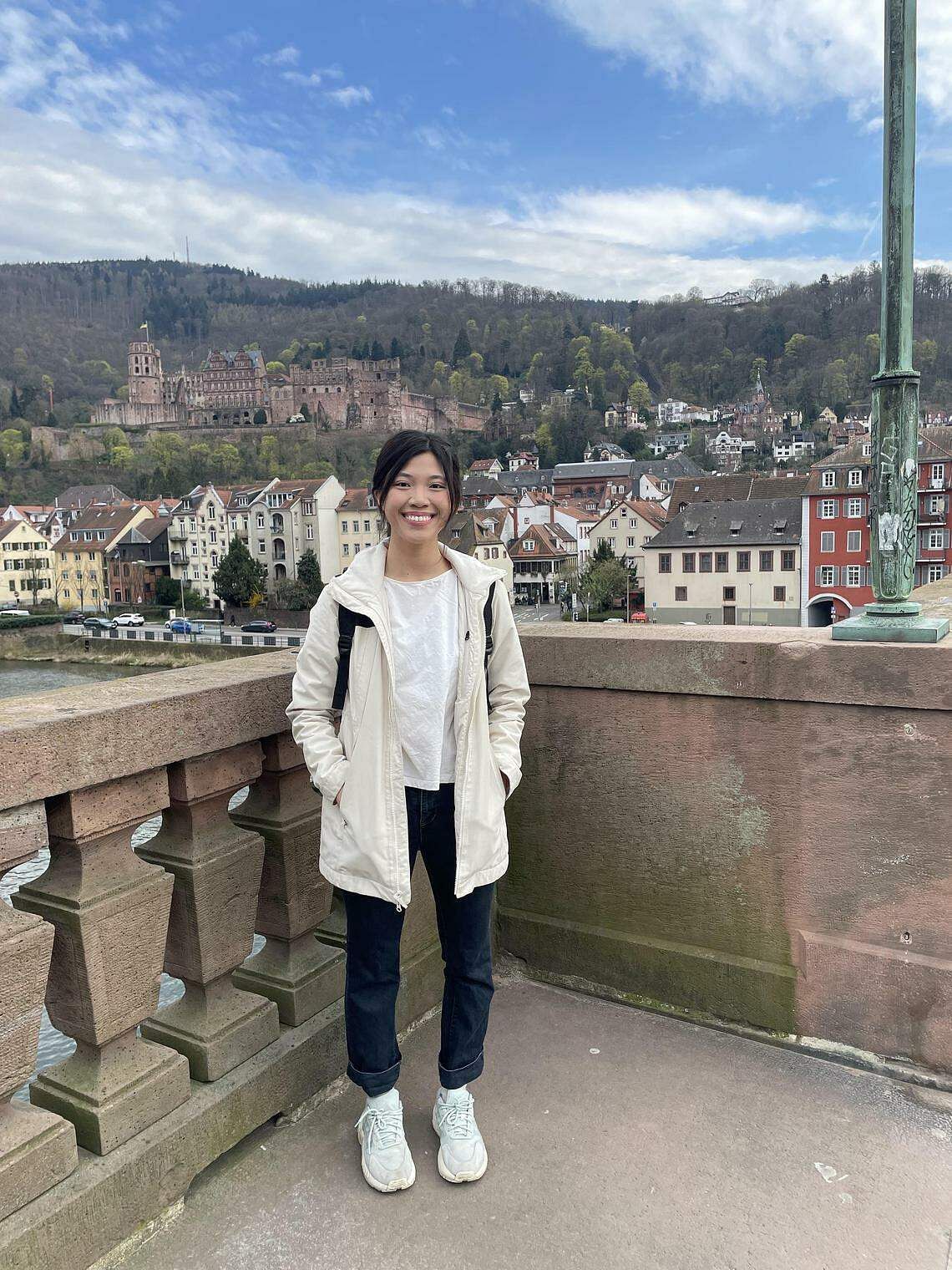
Meanwhile, Mr Brian Wong, a 22-year-old student based in Tokyo, says he sought an alternative to Singapore’s “study-all-the-time” culture, which felt “like a prison”.
Holidays to Japan left him impressed by the country’s history and cultural traditions, so he spent his national service years learning Japanese through language-learning apps which connected him with other Japanese speakers.
Although the apps set him up with his first friends in the country, he had to be more fluent to be ready for university-level studies. Getting into his four-year undergraduate programme in global management at Chuo University in Tokyo – taught in English and Japanese – involved completing a foundational year in Japanese at a language school in Tokyo and passing a tough entry exam.
Afterwards, he found student life there less dominated by grade chasing than extracurricular clubs, internships, and exploring the country with trips to Chiba and Mount Fuji. “I’ve made a lot of Japanese friends, and if I moved back to Singapore, it would feel like I’m leaving behind half of myself,” he says.
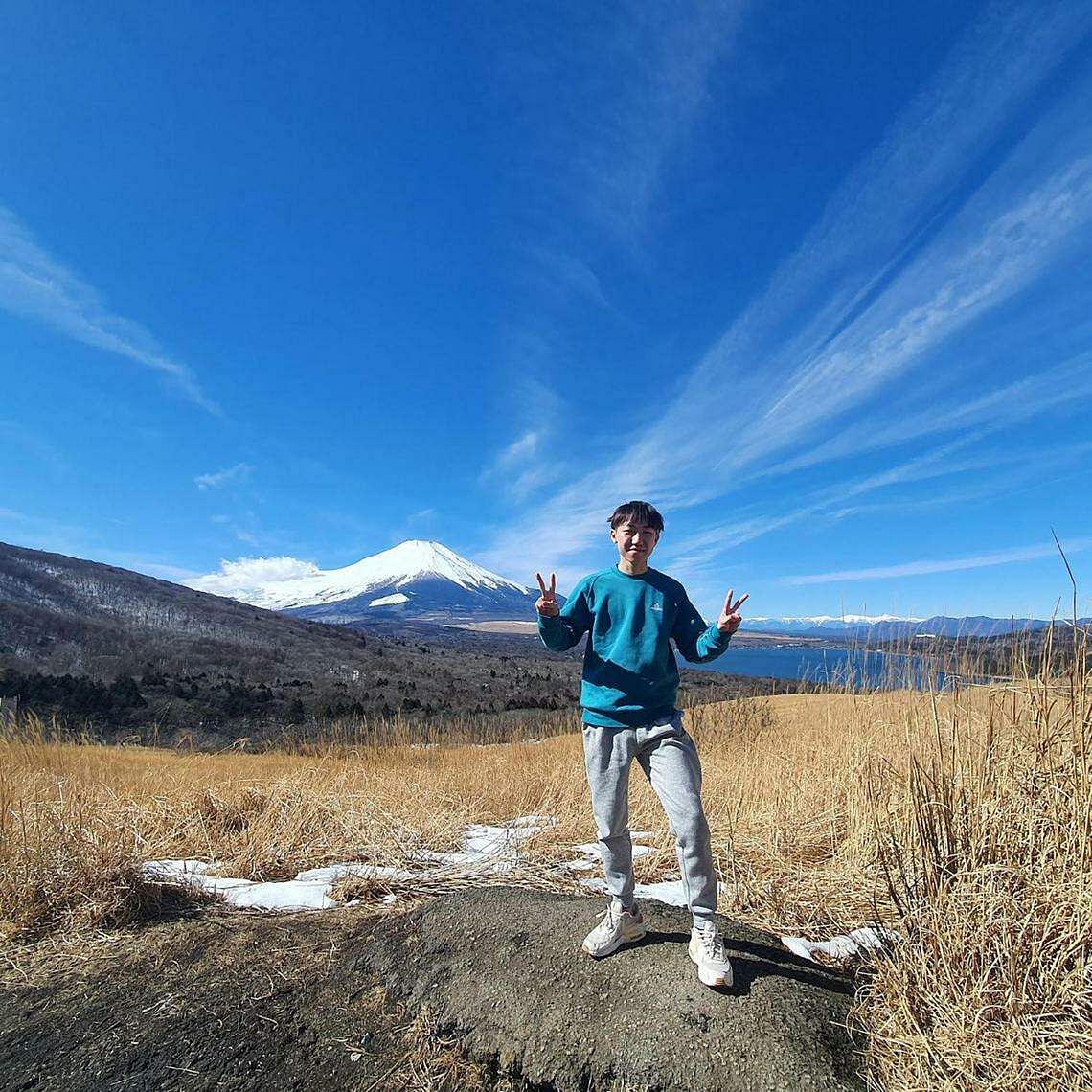
Similarly, Ms Luk says her time in university was more focused on securing internships and networking than scoring As. That helped her land her current job on the operations team of a bank in Amsterdam upon graduation. It was an approach enabled by one of the notable quirks of the Dutch education system: Students can resit any exam once, at no penalty.
Now a year into her job there, she says the Netherlands’ multilingual workplace has not made her feel out of place as someone with limited conversational Dutch fluency. Her university course was taught in English.
She says the Netherlands is the place she calls home for now because it has what she finds lacking in Singapore, namely work-life balance and the ability to collect international experiences. These, she says, include enjoying more affordable concert culture and the ease of travelling around the borderless Schengen Area within the European Union.
Overcoming culture shock
Of course, not treading the well-worn path is not all roses. Culture shock can prove to be a daunting and isolating challenge, especially in the initial months.
“I’ve never met someone who was like me, a Singaporean who was studying in my city long-term. Most of the ones I meet are in the Netherlands as exchange students,” says Ms Luk about her time in Tilburg.
The Singapore Students’ Association of Germany told The Straits Times it has around 20 active members, while the equivalent association in Japan has about 160. This is a stark contrast to big cities in anglophone countries with big Singaporean communities. For example, the Singapore Students Association at just one university in the US – the University of Illinois Urbana-Champaign – has more than 120 students on its registry.
This scarcity of Singaporean compatriots means having to go it alone when dealing with culture shock. These range from unpleasant brushes with slow bureaucracy – fax machines and paper are preferred over e-mail in Germany and Japan – to struggling with a new language and getting used to a different way of life.
Mr Hannan Hazlan, a 26-year-old pursuing an undergraduate degree in mechanical engineering at RWTH Aachen, a public university in North Rhine-Westphalia, Germany, says: “I knew that Germany offered free tuition, but I didn’t know how hard learning German would be.”
He pays around €300 ($440) for a 14-week semester in administrative fees, which adds up to $880 a year.
While picking up everyday conversational German to order a meal is easy, understanding the technical German required for schooling is much tougher. The second-year undergrad credits the time he invested in learning the language prior to his course as the key reason why he was not overwhelmed by his German-language curriculum.
Besides a year spent at a language school in Berlin, he began studying German on his own during NS. Still, when he first moved there, Mr Hannan recalls having to ask locals if they spoke English.

But overcoming the linguistic challenge was worthwhile. Mr Hannan, who graduates in 2026, plans to settle down in Germany to build a career in the automotive industry, and has found a new community of friends.
As a car enthusiast, Germany was an intuitive choice for him, a way to combine his career aspirations – working for a leading carmaker such as Volkswagen or BMW – with a work culture that focuses less on grinding and hustle.
It helps that the country has an intense love of motoring. “Even people who don’t study here and are just visiting, they come to drive on the autobahn to experience driving 300km an hour or more on a public highway,” he says.
Meanwhile, Ms Sabrina, who moved to Japan with only an elementary grasp of Japanese, credits the immersion with getting her to her current level of fluency – the second-highest of Japan’s five-point scale of language proficiency.
“This was something I was very scared of doing, I didn’t want to lose face and talk to people before I was fluent in Japanese, but then eventually, I decided I had to,” she says.
Through joining groups such as her university’s entrepreneurship club and part-time sales work, her friends now include international students – who account for no more than 10 per cent of her current cohort of about 100 students – as well as Japanese co-workers and fellow business-minded locals.
Having bought a small Daihatsu car from a senior at the university for about $1,000, she now relishes driving around Kyushu and exploring the country – especially during the Covid-19 years when borders closed and tourism was at an all-time low.
She now plans to complete a two-year master’s degree at Kyushu University and contribute to the growing start-up scene in Fukuoka. She hopes to open a business that leverages the design and entrepreneurial skills she gained during her studies.
“I didn’t really put Japan on this pedestal where I thought it was going to be sparkly and beautiful all the time,” says Ms Sabrina. But she adds that these past four years studying there opened her eyes to a radically different world.
For those considering it, she has these words of advice: “I would say it’s not the right place if you’re not willing to take up the challenge of learning a new language and culture, and accept that what you already know isn’t universal.”
Join ST's Telegram channel and get the latest breaking news delivered to you.
- Netherlands
- Higher education
- University admission
- Universities - overseas
Read 3 articles and stand to win rewards
Spin the wheel now
Popular Searches
Initiatives, for singapore citizens & permanent residents.
Don't have a Singpass account? Forgot your password? Click here
For Foreign Tertiary Students in Singapore
Log in with your social media account, modal title, duplicate sessions, corp pass login.
- TP Admin
- Job Admin
- Course Admin
- isForeignEntity
- isNonSingpassHolder
SkillsFuture Career Transition Programme
Published by: SkillsFuture Singapore
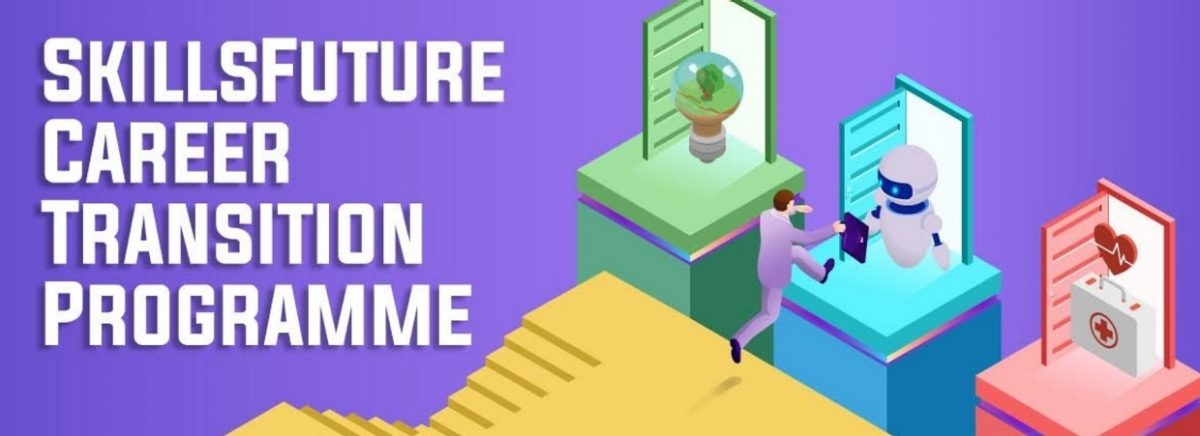
What is SkillsFuture Career Transition Programme?
The SkillsFuture Career Transition Programme (SCTP) supports mid-career individuals in acquiring industry-relevant skills to improve employability and pivot to new sectors or job roles.
This train-and-place programme is available on a part-time or full-time format, typically ranging from three to 12 months.
The SCTP will be delivered by Continuing Education and Training (CET) Centres and is supported with employment facilitation services.
Courses under the SCTP have been progressively launched since Apr 2022. We target to have at least 200 SCTP courses by 2025.
Key Benefits
Enroll for industry-relevant courses in sectors with good hiring opportunities such as Infocomm and Technology, Professional Services and Advanced Manufacturing.
Flexibility of part-time or full-time courses
Modular training courses of typically three to 12 months duration
Employment facilitation services and career advisory to enhance your employment prospects.
The SCTP is open to all Singaporeans and Singapore Permanent Residents aged 21 years old and above, who are looking for training opportunities to transit to a new sector or job role. Both unemployed and employed individuals can participate in SCTP courses, as long as they can fulfil training commitments, which include the passing of assessments.
Trainees will be assessed by the training providers on their suitability for the selected courses prior to enrolment and academic qualifications may be one of the assessment criteria.
As SCTP operates on a Train-and-Place modality, training providers will provide career advisory and employment assistance to help trainees in their job search in relevant sectors or job roles. However, there is no guarantee of a job placement and trainees would need to be open to the job opportunities available.
Yes. The exact course fees vary depending on the type of course. Nevertheless, SSG will work with training providers to ensure that course fees remain affordable.
The prevailing course fee funding rates for courses offered by SSG-appointed CET Centres will apply, i.e. eligible trainees will receive baseline funding of up to 70% of course fees, while eligible Singaporean trainees aged 40 years and above will receive enhanced funding of up to 90% of course fees under the SkillsFuture Mid-career Enhanced Subsidy.
In addition, individuals who are eligible for the additional course fee funding support will receive up to 95% course fee funding for the SCTP courses. Trainees can also use the SkillsFuture Credit and Additional SkillsFuture Credit (Mid-Career Support) to offset the out-of-pocket course fees.
The additional course fee funding support of up to 95% of the course fees for SCTP courses will be available for jobseekers with greater needs. To be eligible for the additional course fee funding support, individuals must be Singapore Citizens and meet one of the following eligibility criteria:
a. Long-term unemployed individuals (unemployed for six months or more); or
b. Individuals in need of financial assistance – ComCare Short-to-Medium Term Assistance (SMTA) recipients or Workfare Income Supplement (WIS) recipients; or
c. Persons with Disabilities.

SkillsFuture Career Transition Programme By Area of Training
- Advanced Manufacturing
- Construction/Facilities Management
- Early Childhood
- Engineering
- Environmental Services
- Financial Services
- Food Manufacturing
- Food Services
- Healthcare & Community Care
- Infocomm & Media
- Personal Services
- Professional Services
- Social Services
- Transport & Logistics
- Wholesale Trade
Latest Articles
Most viewed articles.
Featured Article
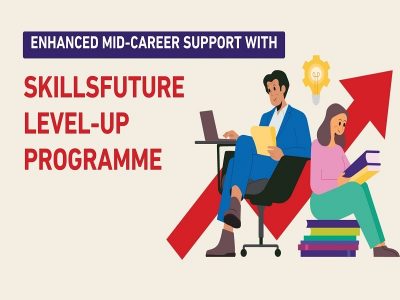
Expanded training support for Singaporeans aged 40 and above to continue skills upgrade and pursue s...

SkillsFuture Level-Up Programme
Published by SkillsFuture Singapore

Skills Demand for the Future Economy 2023/24 Report
In the Skills Demand for the Future Economy (SDFE) 2023/24 report, you can find out about this and m...

The SkillsFuture Career Transition Programme (SCTP) supports mid-career individuals in acquiring ind...

Enabling Inclusive Training
Inclusive training not only empowers individuals with special needs but workplace culture, encouragi...

Additional SkillsFuture Credit (Mid-Career Support)
Provided to every Singapore Citizen aged 40 to 60 as of 31 December 2020, the Additional SkillsFutur...

SkillsFuture Credit
Singaporeans can use their SkillsFuture Credit to pay for selected online learning subscription plan...

Protect Yourself From Fraudulent Emails
Scammers may send emails pretending to be from SkillsFuture Singapore (SSG) and ask for your persona...

Who Says I’m Too Old For Tech Jobs?
Mid-careerists looking to convert into the tech industry can find useful tips on how to reskill or u...

A Chartered Engineering Technologist's Training Journey at LTA:...
Diploma-holder Azhar Yeo has progressed from an Engineering Officer at LTA to Engineer through his p...

Critical Core Skills That Employers Want
Employers have been increasing their demand for specific soft skills, also known as Critical Core Sk...

How AI Singapore Taps on Generative AI to Enhance Recruitment
AI Singapore has developed AsKevin!, a tool created by one of its AI engineers and two of his AIAP a...

Courses to Support Caregivers Training
The Agency for Integrated Care (AIC) and SkillsFuture Singapore (SSG) have put together the AIC-SSG ...
Government agencies communicate via .gov.sg website (e.g. go.gov.sg/open). Trusted websites
- SchoolFinder
- CourseFinder
- Academic calendar
- Quick links
- My shortlisted (0)
The Ministry of Education (MOE) formulates and implements education policies on education structure, curriculum, pedagogy, and assessment.
Our mission and vision
Find out about the MOE's mission and vision of Thinking Schools, Learning Nation.
Our organisation structure
Find out about our political office holders, senior management, our organisation structure and the key functions of each group and division.
Our service commitment
We strive to provide helpful and timely solutions to your needs. Learn about our eServices, service channels and standards.
Emergency preparedness
We emphasise greatly on the safety and security of our students and staff. Learn about our measures and who to contact in an emergency.
Words of encouragement
Inspired by a teacher? Received exemplary service from an MOE staff? Share your experience with us. Our heartfelt thanks to all who have posted your appreciation notes !
An inside look into our schools
Moe corporate brochure.
Capturing Singapore’s education journey and student experiences from preschool to adulthood in this downloadable publication. Includes information on lifelong learning and a chapter for overseas Singaporeans.
Education Statistics Digest (ESD)
The Education Statistics Digest (ESD) provides basic statistical information on education in Singapore. It includes statistical information on schools, enrolment, teachers, educational outcomes, employment outcomes and finances.
Contact: The Teachers' Digest
Read or download the Contact: The Teacher's Digest, a quarterly publication from the MOE communications and engagement group, detailing the experience of teachers and principals.
Our Schools, Our Stories
"Our Schools, Our Stories" Photo & Video Contest showcases the fascinating stories of everyday school life — through the eyes of our teachers, students and staff.
- Skip to main menu
- Skip to user menu

Faculty Opening, Centre for Communication Skills

FACULTY OPENINGS AT THE SINGAPORE INSTITUTE OF TECHNOLOGY
The Singapore Institute of Technology (SIT) is Singapore’s fifth autonomous university and was founded with the vision to lead in innovative university education by integrating learning, industry and community. SIT espouses an applied learning approach and offers degrees that focus on industry-relevant science and technology areas. Our faculty work closely with industry on translational research and innovation, as well as providing consultancy to address industry challenges. This well-established nexus with industry endows our graduates with deep skills and work-ready training experience - attuning them to the needs and demands of the future economy.
As a young university, we encourage innovation and seek the right candidates to join us in realizing our vision. We offer competitive remuneration, generous employment benefits, access to funding to undertake research of relevance to industry, and the opportunities to inspire and nurture the next generation of skilled and work-ready graduates. We currently have positions available from Lecturer to Associate Professor.
Successful candidates will join the Centre for Communication Skills (CCS) , as members of a team of accomplished experts who are passionate about incorporating critical thinking in the teaching of writing and presentation skills of content in higher education. Successful candidates will also be actively involved in embedding the teaching of specific writing and speaking skills in content modules across academic years and programmes in different disciplines. CCS faculty are also deeply involved with industry transformation through their applied research in communication in the disciplines. They are also provided with paid leave to undertake consultancy work with industry and/or spend time attached to work with industry.
We will prioritize collegiate and team-spirited candidates with either (a) an earned PhD or equivalent from a reputable university with specialization in applied linguistics, science communication or related discipline and some relevant work experience.
Applications will be accepted until the positions are filled. All applications must be submitted electronically via the "Apply Now" button below. Please contact the CCS Director, Assistant Professor Radhika Jaidev via [email protected] if you have any specific enquires relating to these opportunities.
Share this job
Get job alerts
Create a job alert and receive personalised job recommendations straight to your inbox.
Before you apply - Turn on alerts for jobs like this!
We'll send them straight to your inbox :
When you create this job alert we will email you a selection of jobs matching your criteria. Our terms and conditions and privacy policy apply to this service and you can unsubscribe at any time.
By clicking to continue to apply below, your email address will be shared with the employer.

IMAGES
COMMENTS
Education in Singapore is managed by the Ministry of Education (MOE). It controls the development and administration of state schools receiving taxpayers' funding, but also has an advisory and supervisory role in respect of private schools. For both private and state schools, there are variations in the extent of autonomy in their curriculum, scope of taxpayers' aid and funding, tuition burden ...
How does Singapore achieve high scores in international tests? Learn about its instructional regime, institutional arrangements and cultural orientations that shape its education system. Find out what are the challenges and opportunities for reform in the 21st century.
Learn how Singapore's education system aims to nurture the whole child and develop them into lifelong learners with multiple pathways and diverse learning experiences. Find out about the primary and secondary courses, the bilingual policy, the teacher development, and the community involvement.
Learn about Singapore's education system, which is among the top-performing globally, with high scores in PISA rankings. Find data on government spending, enrollment, educational institutions, and teaching staff in Singapore.
Singapore's education system aims to bring out the best in every child. We aspire for every person who has gone through the Singapore education system to embody the Desired Outcomes of Education. These outcomes emphasise education fundamentals: nurturing whole individuals in the moral, cognitive, physical, social and aesthetic spheres.
Learn how MOE aims to help students develop 21st century competencies, discover their talents and passions, and engage in different learning modes. Find out about compulsory education, desired outcomes, educational technology, schools, programmes and private education in Singapore.
Singapore is a city-state in South-east Asia of about 710 square kilometers and inhabited by 5.64 million people of Chinese, Malay, Indian, and Eurasian background.
The Singapore education system was able to adapt to the impact of the COVID-19 pandemic by switching to full home-based learning and subsequently blended learning. The centralized infrastructure ...
Learn how Singapore is changing its education system to prepare students for the future and provide a good and affordable education for every child. Find out about the new pathways, financial support and learning approaches in Singapore.
Historically, British colonial education policy in Singapore could be described as one of "benign neglect," with English-medium education prioritized over vernacular education, leaving the ethnic Chinese community to take care of its own Chinese-medium education (Gopinathan 2015, p. 17).Chinese education was also deprived of opportunities in tertiary education and civil service employment ...
Resources for education. Singapore ranked among the countries with the smallest difference in mathematics performance associated with principals reporting that the school's capacity to provide instruction is hindered to some extent or a lot by a lack of physical infrastructure, after accounting for students' and schools' socio-economic profile.
One of the biggest and most important changes in the Singapore education, according to Prof Tan in his 40 years of experience, was the emphasis on meeting the different needs of every child. While factors such as curriculum, reduced class size, and family and community involvement contribute to student success in and out of classrooms, research ...
Yew-Jin Lee is Associate Professor at National Institute of Education, Nanyang Technology University in Singapore. As a trained science educator, he has done extensive work on comparative curriculum research and science education in East Asia, especially at the elementary level of schooling.
Average Cost of Education in Singapore . The cost of education in Singapore varies depending on the type of institution and level of education. Here is a general overview of the average cost of education in Singapore. Early childhood education: The cost can range from around SGD 500 to SGD 2,500 per month for full-day childcare and preschool ...
Learn how Singapore transformed from an impoverished island to a top-performing country in education and innovation. Explore its education system structure, governance, planning, goals, and initiatives.
Singapore's education system has been the focus of intense international interest for the past two decades thanks to its students' repeated successes in cross-national tests of educational achievement such as PISA. The system has been hailed as a model worthy of emulation by countries eager to reform what many governments perceive to be schools that are failing to foster high achievement ...
According to the Ministry of Education's Educational Digest of 2015, the first-year intake of students in universities in Singapore in 2005 was 12,508. Four years later, the number of graduates was 11,947—a graduation rate of nearly 96% (Ministry of Education Singapore, 2015). Among other higher education sectors, including the polytechnic ...
Try using our site-wide search, Ask MOE chatbot, or Frequently Asked Questions (FAQs) to find answers to your queries. Contact Us. Your source of education-related information and services in Singapore - includes school registration, school information, special educational needs, curriculum and financial matters.
Contributions. The first two papers "Changing Assessments and the Examination Culture in Singapore: A Review and Analysis of Singapore's Assessment Policies" authored by Hwei Ming Wong, Dennis Kwek and Kevin Tan, and "Education Reforms within Neoliberal Paradigms: A Comparative Look at the Singaporean and Finnish Education Systems" by Siao See Teng, Mardiana Abu Bakar and Heidi Layne ...
The Singapore education system. Pre-school is offered from age three, in Singapore, with primary schooling from the age of around seven. After primary school, children move onto secondary school, which runs for students aged from around 12, to 16 or 17. To go to university, teenagers must attend a two or three year preparation course, which is ...
Singapore's education system has consistently been praised as one that is highly successful and competitive. The country is ranked high in international league tables like OECD'S Programme for International Student Assessment ().It has also been placed under the top ten in rankings for countries with the best education systems in 2020.. With a flourishing economy and business hub ...
Learn about the education system in Singapore, one of the best in the world, and its advantages for international students. Find out how Singapore nurtures talents, provides internationally recognized degrees, and offers a stable and vibrant lifestyle.
Singaporean degree-seekers in the Netherlands rose more than twofold from 32 in 2012 to 109 in 2022, according to Nuffic, the Dutch organisation for internationalisation in education.
This train-and-place programme is available on a part-time or full-time format, typically ranging from three to 12 months. The SCTP will be delivered by Continuing Education and Training (CET) Centres and is supported with employment facilitation services. Courses under the SCTP have been progressively launched since Apr 2022.
The Ministry of Education (MOE) formulates and implements education policies on education structure, curriculum, pedagogy, and assessment. ... Capturing Singapore's education journey and student experiences from preschool to adulthood in this downloadable publication. Includes information on lifelong learning and a chapter for overseas ...
FACULTY OPENINGS AT THE SINGAPORE INSTITUTE OF TECHNOLOGY The Singapore Institute of Technology (SIT) is Singapore's fifth autonomous university and was founded with the vision to lead in innovative university education by integrating learning, industry and community.
2023 stats. According to HSA and MOH, 7,838 persons were caught for possessing or using e-vaporisers in 2023. This is a 60 per cent increase from the 4,916 in 2022.
NIE faculty and research staff will maintain a strong presence at this year's Annual Meeting of the International Society of the Learning Sciences (ISLS), with the acceptance of an early career workshop proposal, three long papers, four short papers, two posters, and two symposia for the flagship conference held in Buffalo, New York, from 8 to 14 June 2024.
Definition. The Singapore Department of Statistics defines "Chinese" as a "race" or "ethnic group", in conjunction with "Malay, Indian and Others" under the CMIO model. They consist of "persons of Chinese origin" such as the Hokkiens, Teochews, Hainanese, Cantonese, Hakka, Henghuas, Hokchias and Foochows, Shanghainese, Northern Chinese, etc." Chinese Singaporeans are defined as the "Chinese ...
On 25 March 2024, the WHO Youth Council represented by Kristina Almazidou presented a letter to Dr Tedros Adhanom Ghebreyesus, WHO Director-General and to Mr Chungong, Inter-Parliamentary Union (IPU) Secretary General, urging them to mobilize parliamentarians and reinvigorate action towards Universal Health Coverage (UHC).The letter outlined the following key youth asks to parliamentarians to ...